Unusual and Surprising Truths from the Middle Ages
17 Sep 2024Immerse yourself in the fascinating world of the Medieval Era and uncover more than 30 peculiar and surprising facts. From unusual hygiene habits and strange medical treatments to bizarre laws and unconventional beliefs, this journey through history provides a unique glimpse into life during medieval times. Discover the little-known aspects of this intriguing period, where truth is often stranger and more complex than fiction.
1. The Fashion of Codpieces
The codpiece was more than a mere fashion accessory — it was a daring declaration! Worn conspicuously over men's trousers, this exaggerated garment wasn’t just for appearance; it symbolized virility and was essentially the medieval equivalent of “Look at me!”
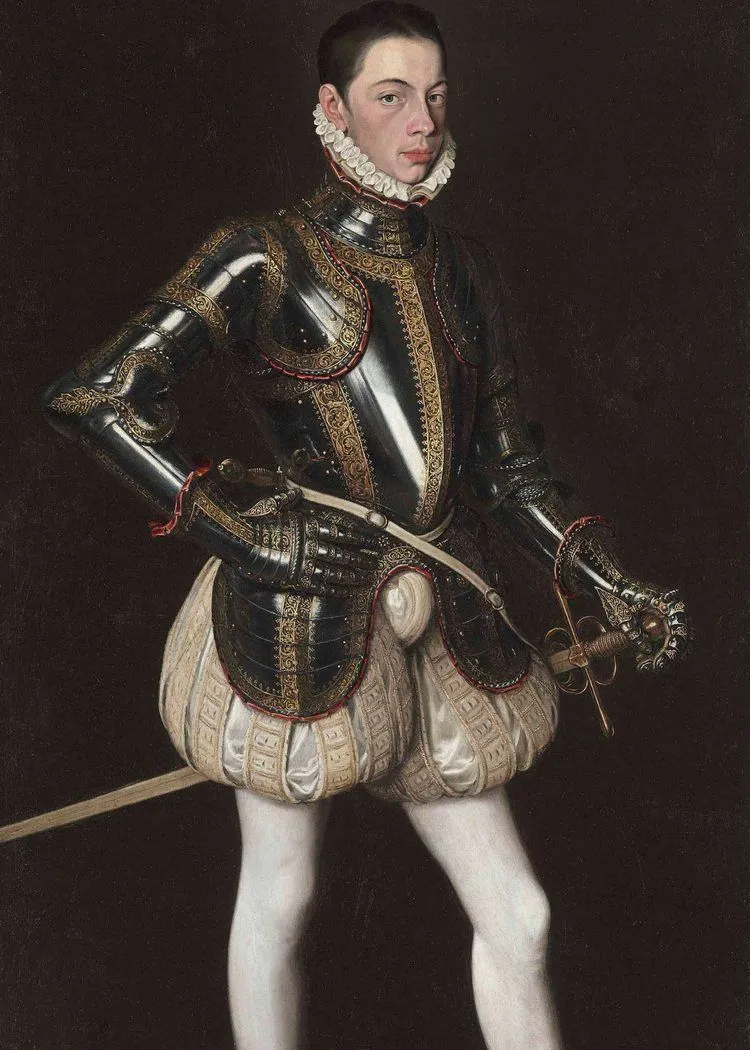 @getttingtop/reddit.com
@getttingtop/reddit.com
Knights and nobles sported codpieces in various sizes and shapes, sparking both envy and amusement. Just imagine jousting while wearing one of these! It's no surprise codpieces became a popular topic of conversation in medieval society.
2. Public Executions in Medieval Times
The entertainment went beyond jesters and troubadours — public executions were a major draw! Whether it was the gallows or the guillotine, crowds eagerly gathered to witness justice — or perhaps satisfy their thirst for blood. While they might not have had popcorn, the excitement was palpable.
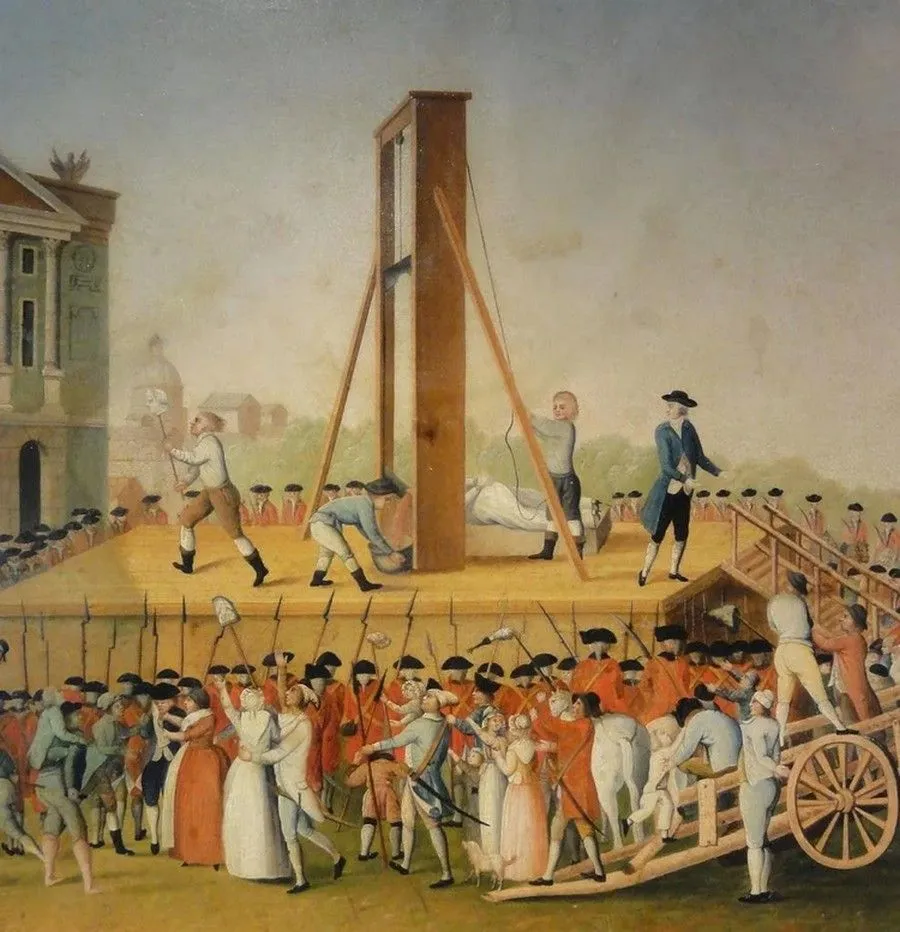 @just--a--redditor/reddit.com
@just--a--redditor/reddit.com
From petty thieves to serious criminals, executioners were tasked with putting on quite the show. Picture the reviews: “Five stars for suspense, minus one for too much gore.” Public executions weren’t just a means of punishment; they were the social events of the season.
3. The Practice of Sati
Love wasn’t always about romance and poetry — it could be a matter of life and death. In certain regions of medieval India, widows were expected to follow their husbands into death by joining them on the funeral pyre, a practice known as Sati.
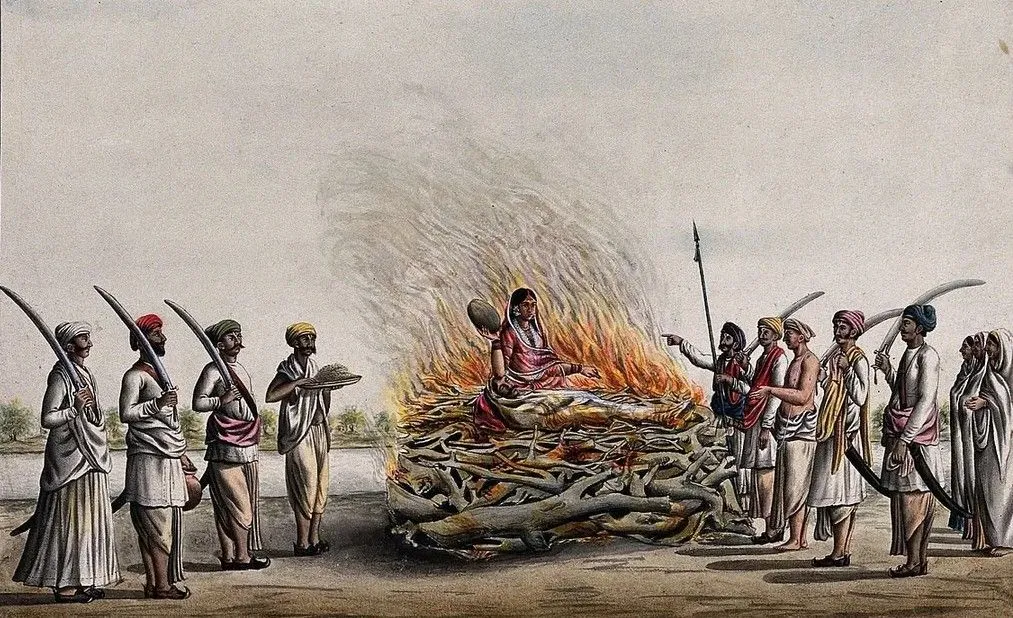 @beleca/reddit.com
@beleca/reddit.com
Imagine the wedding vows: “Till death do us part… and beyond.” Though this practice has long since been abolished, it serves as a haunting reminder of the lengths people once went to in the name of love and tradition.
4. The Widespread Presence of Leprosy
In the Middle Ages, leprosy was more than just an illness — it was a source of widespread fear and social isolation. Misunderstood and heavily stigmatized, those affected were often banished to leper colonies or forced to endure strange treatments, such as wearing bells to signal their presence.
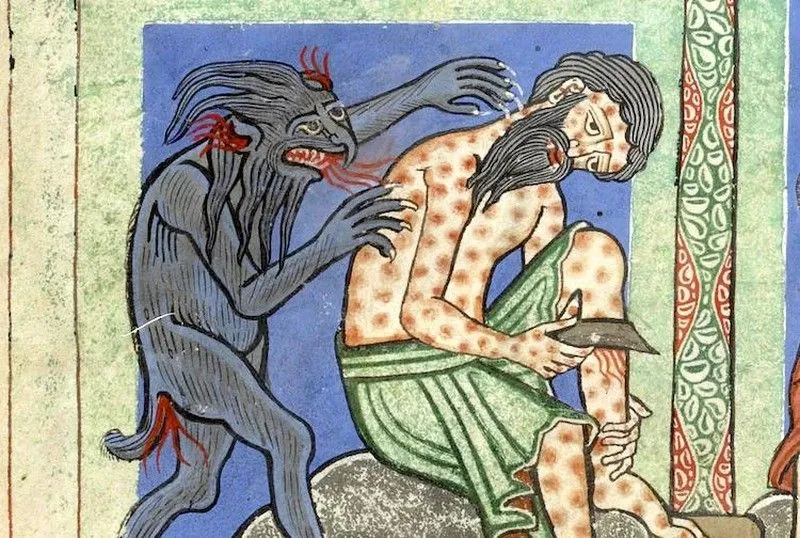 @Harry Sherrin/historyhit.com
@Harry Sherrin/historyhit.com
Yet, despite the fear, some medieval communities balanced their caution with compassion, weaving a complex narrative of superstition and sympathy around those living with the disease.
5. Customs Surrounding Bride Price
Marriage resembled a bustling marketplace, with families negotiating bride prices before the vows were exchanged. These prices, typically paid in livestock, land, or goods, were akin to placing bids on eBay but with dowries instead of auction items.
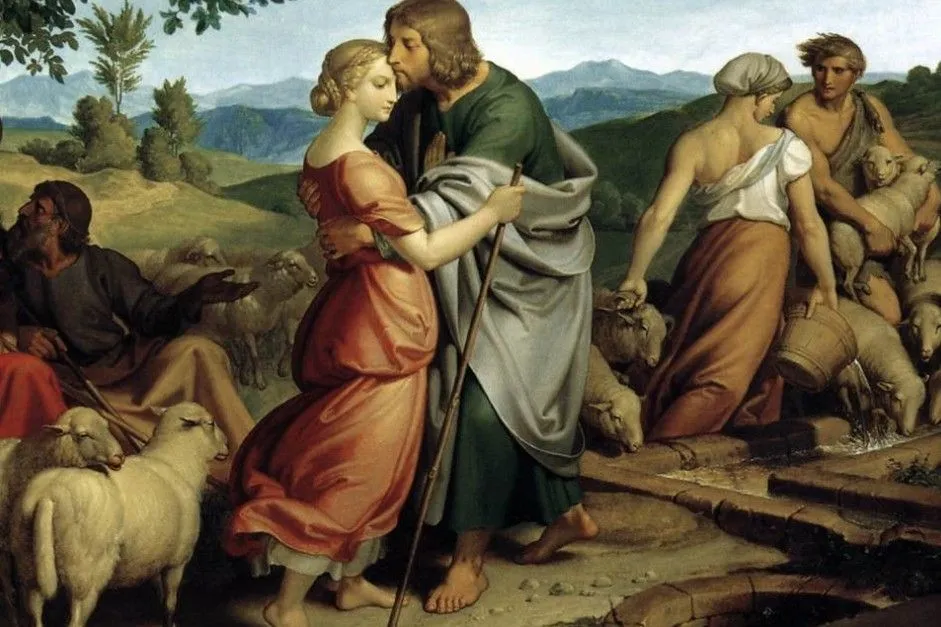 @EDWARD D. ANDREWS/historyhit.com
@EDWARD D. ANDREWS/historyhit.com
Picture the wedding registry: “One cow, two goats, and a set of fine linen — ideal for the newlyweds!” This custom wasn’t merely an economic transaction; it reflected alliances, status, and the intricate power dynamics of medieval relationships.
6. Endless Soup
Imagine a pot of soup that never empties, simmering continuously around the clock. In medieval households, perpetual soup represented the pinnacle of thrift and practicality. Leftovers from each meal — meat, vegetables, even yesterday’s bread — were added to the pot, creating a rich, constantly evolving stew.
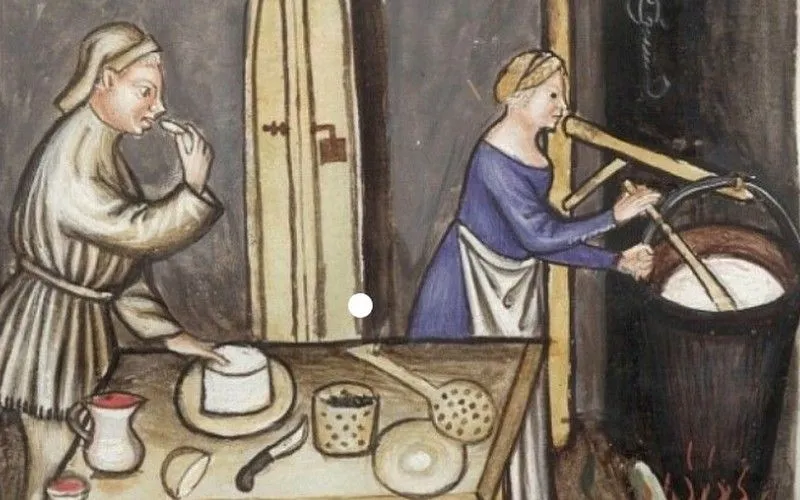 @Rosa M Fontanals/pinterest.com
@Rosa M Fontanals/pinterest.com
This endless soup wasn’t just a means of nourishment; it embodied medieval ingenuity and the art of making the most of available resources. And who doesn’t appreciate a soup that improves in flavor the longer it simmers?
7. Several Children Sharing a Room
Forget about personal space. In those times, family cohesion often meant cramming into a single room — sometimes with several children! Imagine bedtime stories shared with a sibling audience and morning routines that felt like a game of Twister.
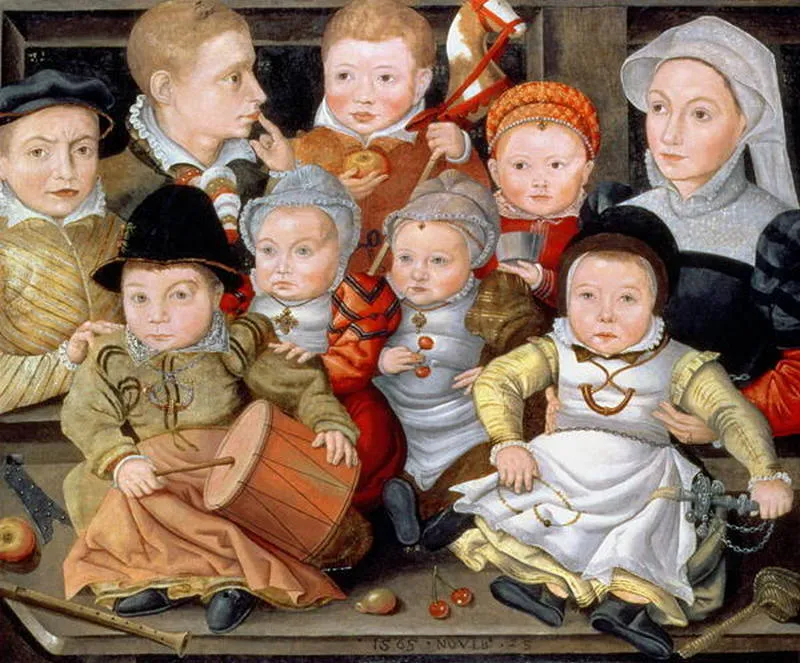 @Jacob Seisenegger/iamachild.wordpress.com
@Jacob Seisenegger/iamachild.wordpress.com
Privacy? That wasn’t an option. It wasn’t just about saving space; it was also about warmth, security, and fostering close family ties — whether you liked it or not. In an era without separate bedrooms, medieval families learned to live, laugh, and occasionally squabble all within one cozy, compact space.
8. Tapestries Instead of Paintings
The tapestries were the height of home decor. Paintings? Those were for the less distinguished. Tapestries served a dual role: they were magnificent works of art and practical insulators against the frigid drafts of stone castles. Think of them as the medieval equivalent of Netflix, featuring more dragons and less buffering. Plus, they were portable! Moving to a new castle?
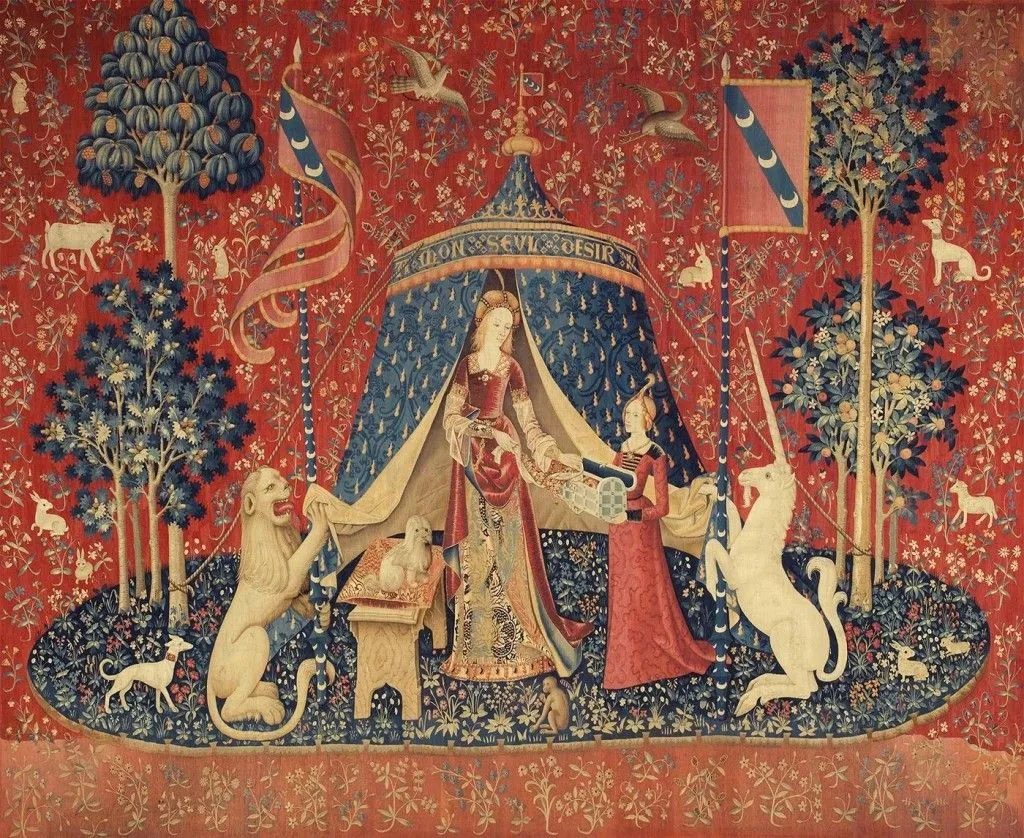 @“The Lady and the Unicorn”: Franco-Flemish Tapestries on Desire and the Senses/onartandaesthetics.com
@“The Lady and the Unicorn”: Franco-Flemish Tapestries on Desire and the Senses/onartandaesthetics.com
Just roll up your wall art and take it with you. Practical and stylish! And of course, tapestries were great conversation pieces. “Oh, this old thing? Just a little souvenir from after the Crusades,” you’d casually mention to your guests. Whether showcasing wealth or simply providing warmth, tapestries were the ultimate medieval multitaskers, far surpassing the humble painting on canvas.
9. Trials of Animals
Believe it or not, animals were put on trial during the Middle Ages. Yes, you read that correctly. Pigs, rats, and even insects could end up in court, facing charges for various “crimes.” Imagine a pig being accused of trampling a child, receiving a lawyer, undergoing a formal trial, and possibly being sentenced to death if found guilty. It may sound like a Monty Python sketch but these trials were taken very seriously.
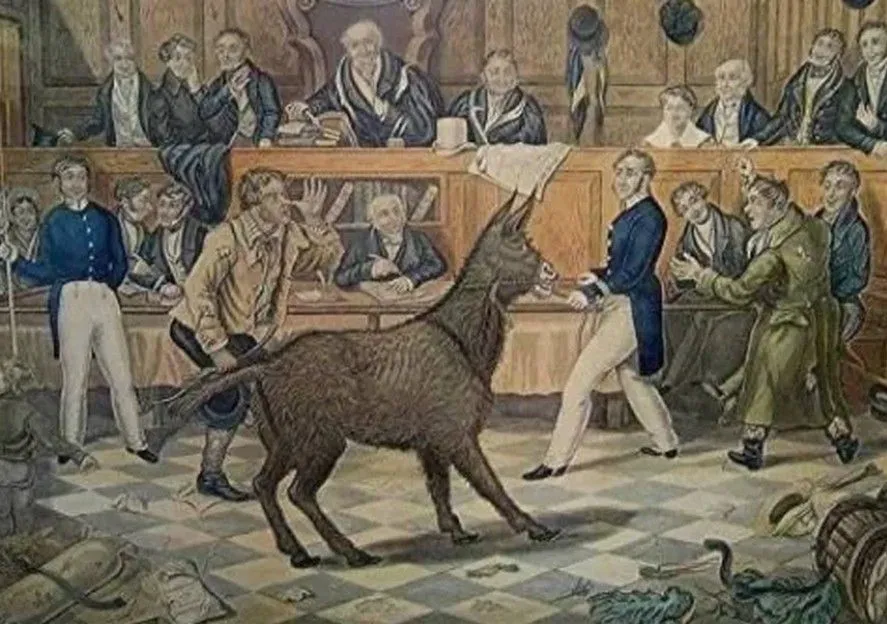 @The bizarre medieval trials against animals/random-times.com
@The bizarre medieval trials against animals/random-times.com
Judges wore their robes, and the accused animals were subjected to the same legal procedures as human defendants. Animal trials reflected the belief that all creatures should be held accountable for their actions. It’s a strange chapter in legal history, highlighting the bizarre and theatrical nature of medieval justice.
10. The Practice of Boiling Fruit
The medieval palate was quite unique, with boiling fruit being a surprisingly popular practice. Fresh fruit was considered potentially risky, so to avoid any digestive issues, people boiled their fruit. This habit transformed ordinary apples and pears into stewed mush, often sweetened with honey and spices. It wasn’t just about health; it also served as a status symbol.
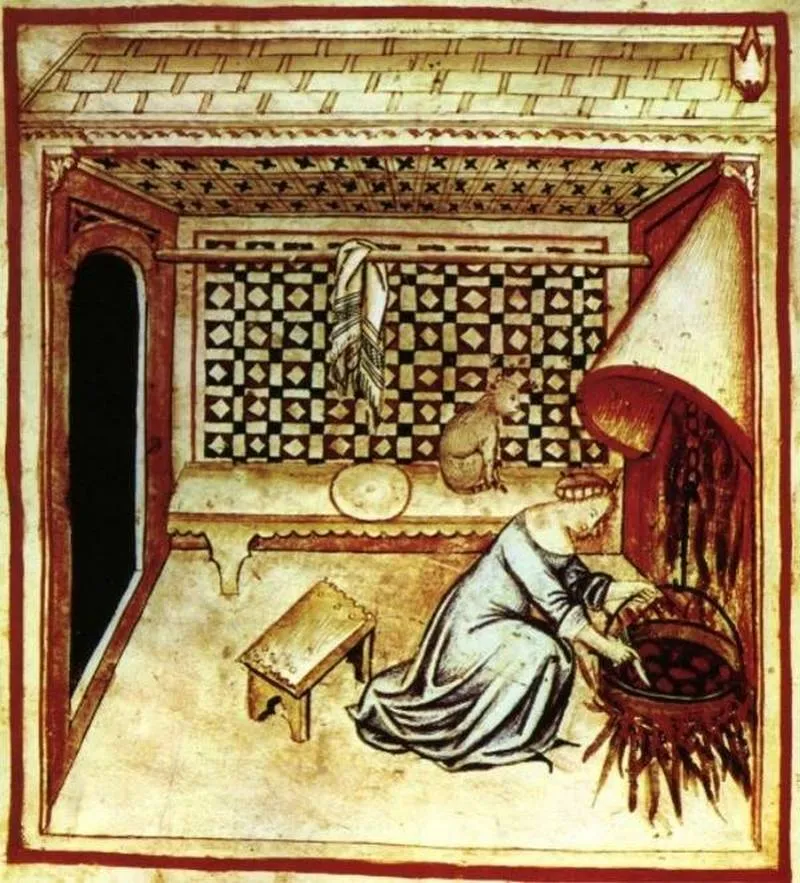 @Laura Martisiute/allthatsinteresting.com
@Laura Martisiute/allthatsinteresting.com
The wealthier you were, the more exotic fruits you could afford to import and boil. Boiled fruit also had the advantage of a longer shelf life, essential in an era without refrigeration. So, next time you find yourself complaining about mundane desserts, be grateful you're not faced with medieval boiled bananas. It's a literal taste of history — one hot, mushy, and somewhat unusual bite at a time.
11. Leather Socks for Walking
Footwear prioritized practicality over style, and walking leather socks were an early example of this utilitarian approach. Picture slogging through muddy streets with leather wrapped around your feet — offering minimal protection but a distinct medieval flair. These “socks” were usually crafted from a single piece of leather, stitched together with gut or thread. They weren’t exactly waterproof, so wet feet were a common issue.
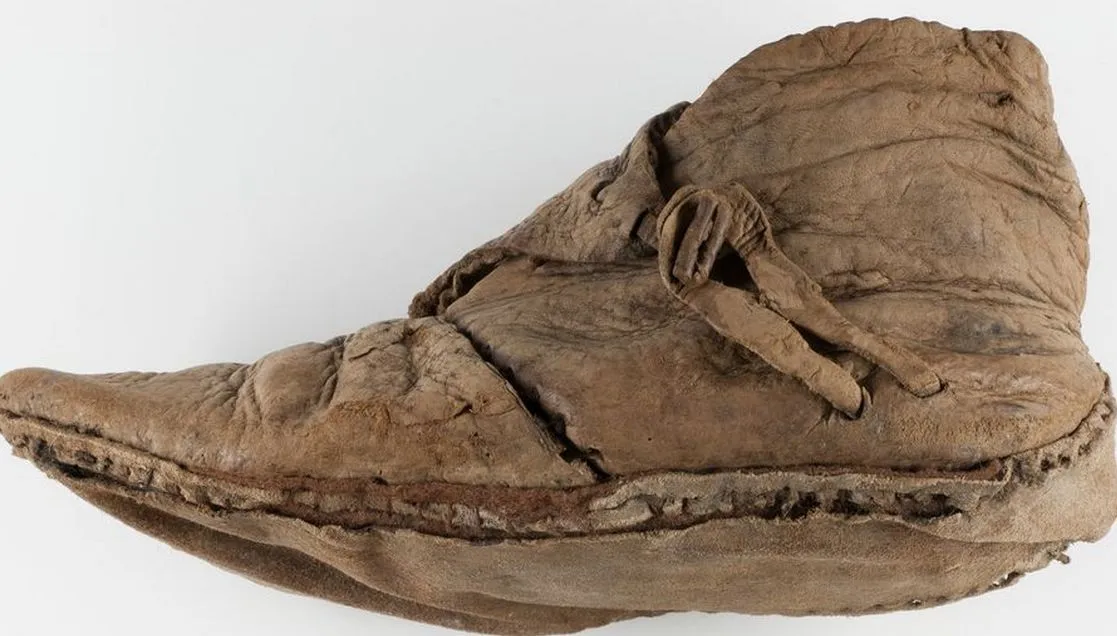 @The Yorkshire Museum/facebook.com
@The Yorkshire Museum/facebook.com
But they were better than nothing! Wealthier individuals could afford more durable shoes with wooden soles or even metal reinforcements, while peasants made do with whatever scraps they could find. Walking leather socks reflect the medieval skill of making the best of limited resources, even if it meant wearing footwear that resembled a DIY project rather than a fashion statement.
12. Urine Donation for Dyeing
The phrase “going to the bathroom” took on a whole new meaning. Urine was a highly valued resource, particularly for dyers who used it to fix dyes in fabrics. Enter the urine donation system for dyers: people would collect their urine and sell it to local dyers. Dyers would let the urine ferment — and the smell must have been quite something — before using it in their dye vats.
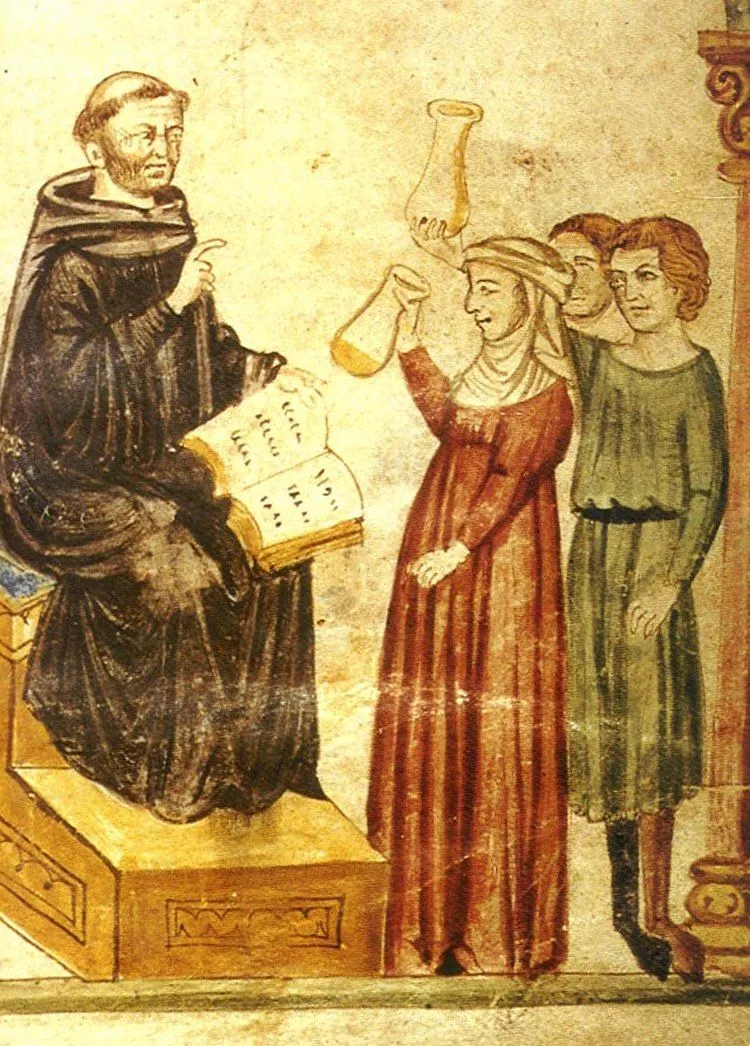 @Five Things To Do With Urine In The Middle Ages/aprilmunday.wordpress.com
@Five Things To Do With Urine In The Middle Ages/aprilmunday.wordpress.com
This process helped produce vibrant, long-lasting colors. So, next time you grumble about modern recycling programs, remember the medieval peasants who contributed their bodily fluids for the sake of fashion. It’s a pungent reminder of the lengths our ancestors went to in their quest for a splash of color.
13. Customs Surrounding Dowries
Medieval marriage was as much a business transaction as a romantic union, with dowry traditions playing a central role. A dowry was a gift from the bride’s family to the groom, often comprising money, land, livestock, or valuable goods. This gift was designed to sweeten the arrangement, ensuring the bride’s financial security and enhancing the family’s social status.
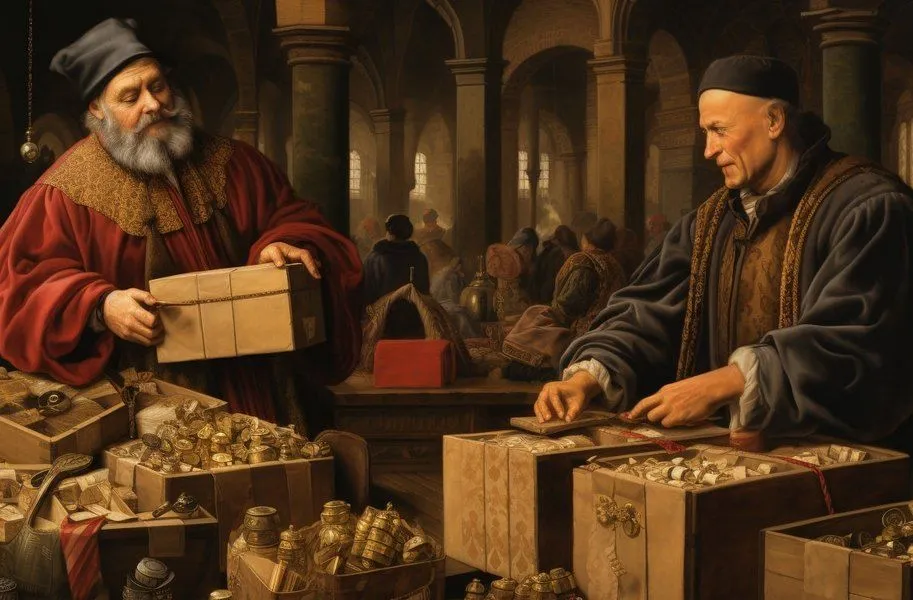 @The Tradition and Significance of Gifts in Medieval Times/knightstemplar.co
@The Tradition and Significance of Gifts in Medieval Times/knightstemplar.co
In some cases, the size of the dowry could make or break a marriage agreement. Families went to great lengths to assemble a substantial dowry, even incurring debt to present a compelling offer. Conversely, a generous dowry could give the bride more influence in her new household. It serves as a historical reminder that, in medieval times, love and marriage were intertwined with economic considerations as much as they were with romance.
14. Stale Bread Dishes
Practicality dominated the kitchen, leading to the clever use of stale bread as plates, known as trenchers. When a loaf of bread went rock-hard, it wasn’t discarded; it became your new dishware. Imagine serving a hearty stew in a bowl made from yesterday’s bread. After the meal, the trencher absorbed all the delicious juices, leaving you with an edible plate. This method not only reduced waste but also simplified cleanup — no dishes to wash!
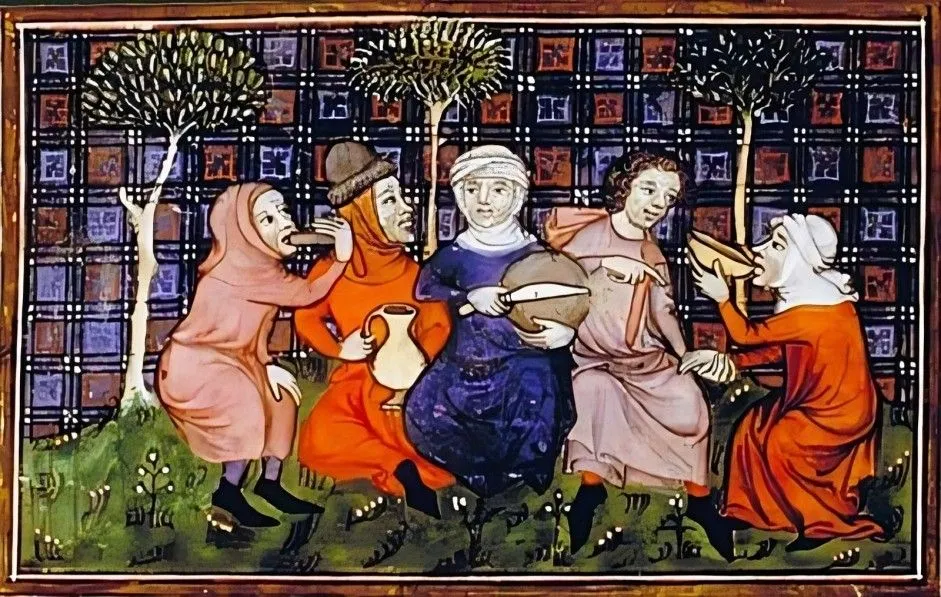 @Bread in the Middle Ages - essential food and reason for religious disputes. Bread in Human History Part IV/artaalba.ro
@Bread in the Middle Ages - essential food and reason for religious disputes. Bread in Human History Part IV/artaalba.ro
Wealthier individuals used fine, fresh bread for trenchers and passed the soggy leftovers down to their servants or the poor. For the very wealthy, trenchers were even coated with gold leaf because why not eat off gold if you could? This eco-friendly dining solution was both practical and inventive, turning each meal into a two-course feast.
15. Shared Family Sleeping Arrangements
Family sleeping arrangements were quite intimate. Entire families often shared a single bed, driven by necessity and practicality. This arrangement wasn’t just about staying warm on cold nights (though that was certainly an advantage); it also helped save space and resources. Beds were costly, and rooms were limited. As a result, family bonds were literally reinforced by nightly snuggle sessions.
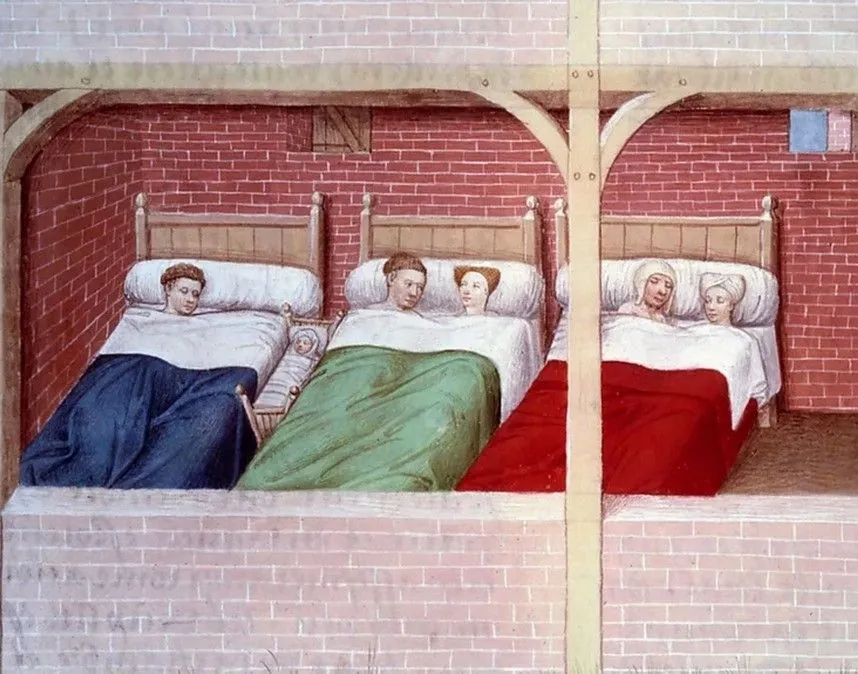 @Zaria Gorvett/bbc.com
@Zaria Gorvett/bbc.com
This sometimes led to amusing situations, such as avoiding a sibling’s kicking legs or dealing with a grandparent’s snoring. Bedtime stories became a shared family ritual, with everyone huddled together, listening to tales of knights, dragons, and distant lands. Today, while many of us cherish our personal sleeping space, these medieval families serve as a reminder of a time when close quarters also meant close connections.
16. Dueling for Honor
Honor duels were the medieval way of resolving disputes with a dramatic clash of swords. When verbal arguments failed, weapons came into play. These duels were about restoring one's honor, typically in response to insults or accusations. While some duels could be deadly, others were more about showmanship than actual combat. The rules varied but the core principle remained — defend your honor at all costs.
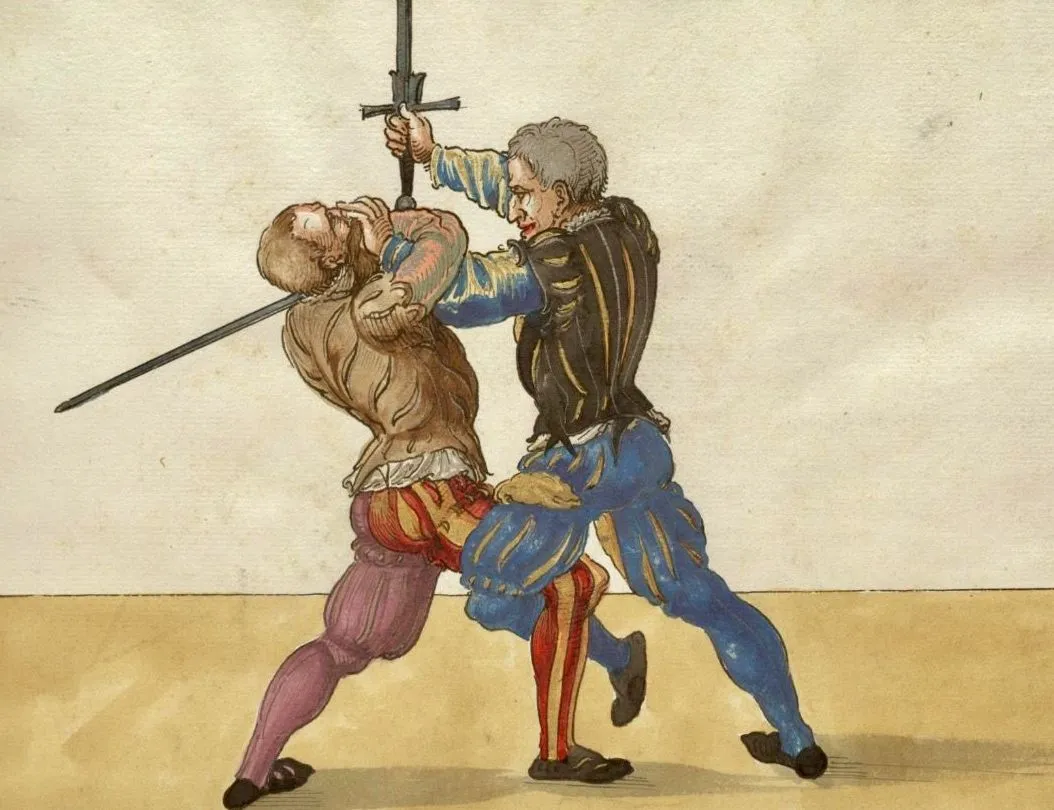 @Crusader1307/stronghold-nation.com
@Crusader1307/stronghold-nation.com
Occasionally, women participated as well, though they might use more "ladylike" weapons, such as daggers or even sewing needles. Refusing a duel was often seen as an admission of guilt or cowardice, leaving participants with few options. Today, we settle disputes through lawyers and mediators but the medieval honor duel serves as a vivid reminder of a time when personal slights were resolved with a dramatic clash of steel and a great deal of bravado.
17. Bloodletting
If you think modern medical practices are strange, medieval bloodletting will truly surprise you. This method was the go-to treatment for almost everything — headaches, fevers, you name it. The basic idea was that illness was caused by bad blood, so removing some would help you get better. Enter the barber-surgeon, who would either cut open a vein or use leeches to draw out the "bad" blood. Imagine visiting your barber for a haircut and a quick bleed — multitasking at its medieval best!
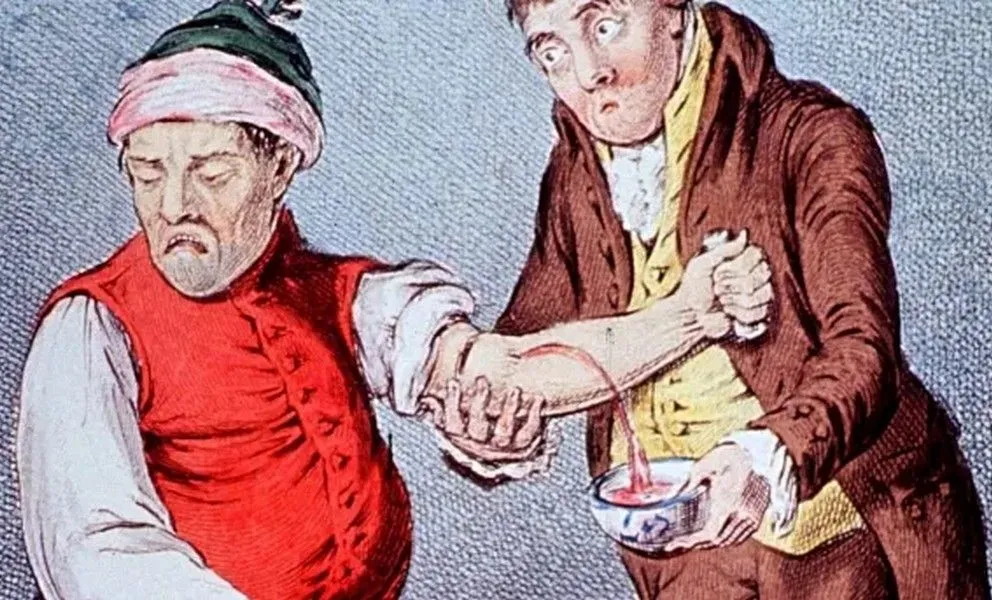 @Jennie Cohen/history.com
@Jennie Cohen/history.com
Leeches were especially popular, and some patients ended up looking like they’d spent the day in a swamp. While it may seem barbaric (pun intended), bloodletting was based on the medical theories of the time, particularly the balance of the four humors. Of course, it often left patients weaker rather than healthier. Still, it offers a fascinating look at how past societies approached health and medicine, showing that sometimes, science can be stranger than fiction.
18. Large Foreheads
Beauty standards had their peculiarities, and large foreheads were highly fashionable. High, wide foreheads were considered a sign of intelligence and nobility. To achieve this look, women would pluck their hairlines back, sometimes as far as halfway up their heads. Ouch! Imagine spending hours plucking just to attain that ideal dome. Some even shaved their eyebrows to enhance the effect further.
 @Isabel Carrasco/culturacolectiva.com
@Isabel Carrasco/culturacolectiva.com
The belief was that the higher the forehead, the closer one was to God. Paintings from the era depict women with expansive, smooth foreheads, which might look quite alien to modern eyes. This beauty trend wasn’t just about appearance — it also served as a status symbol, indicating that one had the luxury to devote time to such meticulous grooming. It’s a reminder that beauty standards are always evolving and often seem quite bizarre in retrospect.
19. Carrying Swords
Carrying a sword was more than just a style statement; it was a practical necessity. Picture knights and nobles parading around with swords at their belts, ever-ready for action. Even common townsfolk often carried smaller blades for self-defense. It wasn’t just about protection; it was also a mark of status.
 @IsaacAnthony1395/reddit.com
@IsaacAnthony1395/reddit.com
The more elaborate the sword, the higher your social standing. Imagine walking into a medieval tavern, your ornate sword drawing everyone’s attention. Of course, this also meant you needed to be proficient with your weapon, or you risked becoming the town’s laughingstock after a failed duel. Swordsmanship was a highly valued skill, learned from a young age.
20. Shared Baths
Forget about personal space! Communal baths were the standard. These bathhouses served as social hubs, much like today’s coffee shops. Men and women typically bathed separately but, in some places, they even shared the same tub—talk about breaking the ice! Bathing was as much a social event as it was about cleanliness.
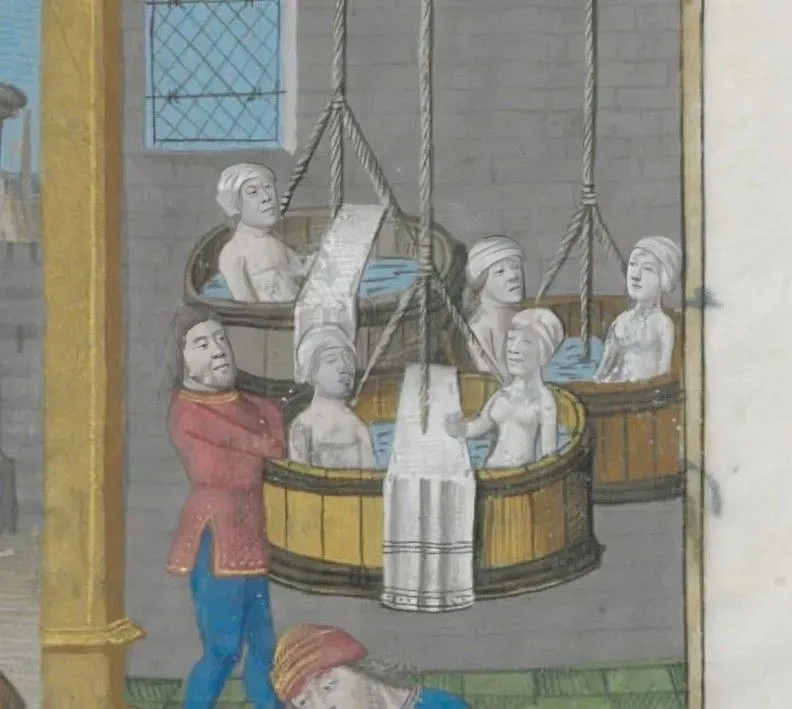 @Did people in the Middle Ages take baths?/medievalists.net
@Did people in the Middle Ages take baths?/medievalists.net
It was an opportunity to relax, catch up with friends, and even conduct business. Imagine closing a deal while scrubbing your back! However, hygiene wasn’t quite as advanced as it is today. Water was often changed only once a day, so the last bath of the day might not have been the most refreshing. Nonetheless, communal baths were a vital part of medieval life, offering warmth, cleanliness, and a chance for social interaction.
21. Medical Urine Tests
The doctors had a distinctive method for diagnosing health issues: the urine test. Patients would bring a flask of their urine to the doctor, who would examine it with the meticulousness of a sommelier. Color, smell, and even taste were all assessed — imagine the doctor swirling it in a goblet, sniffing, and perhaps even taking a cautious sip.
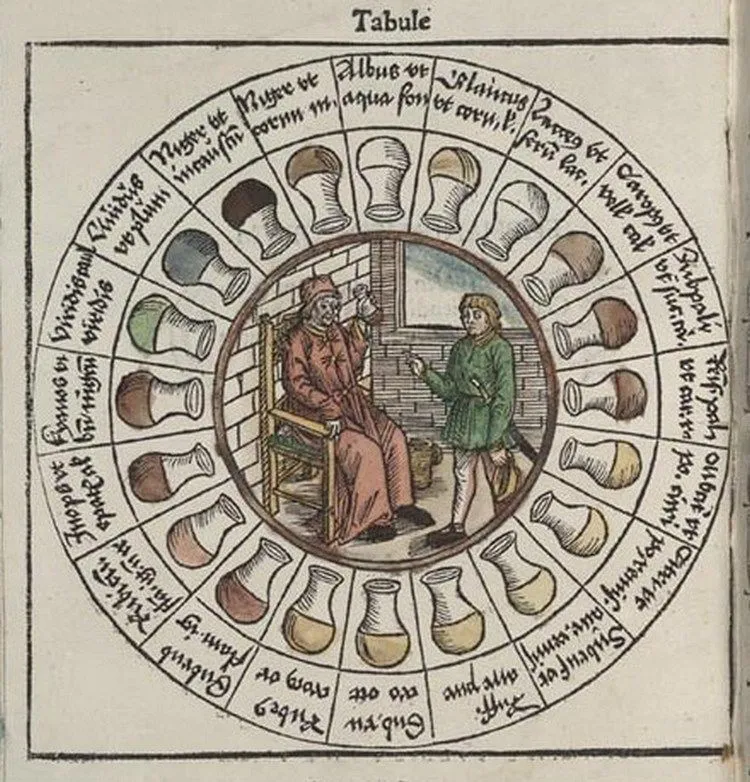 @BedsideRounds/reddit.com
@BedsideRounds/reddit.com
It might sound like a strange wine-tasting event but this practice was rooted in the belief that urine could reveal everything about a person's health. A cloudy sample might suggest a cold, while a particularly pungent one could indicate more serious conditions. Though this method might seem humorous by today’s standards, it was considered advanced medical practice at the time. Doctors relied on these tests with a surprising level of confidence.
22. Marriage Duels
The weddings were more than just ceremonies and feasts; they occasionally featured a good old-fashioned duel. These wedding duels weren’t about contesting the bride’s hand but rather resolving any disputes that might arise, even on the big day. The duels adhered to strict chivalric codes, ensuring that honor was preserved even in combat.
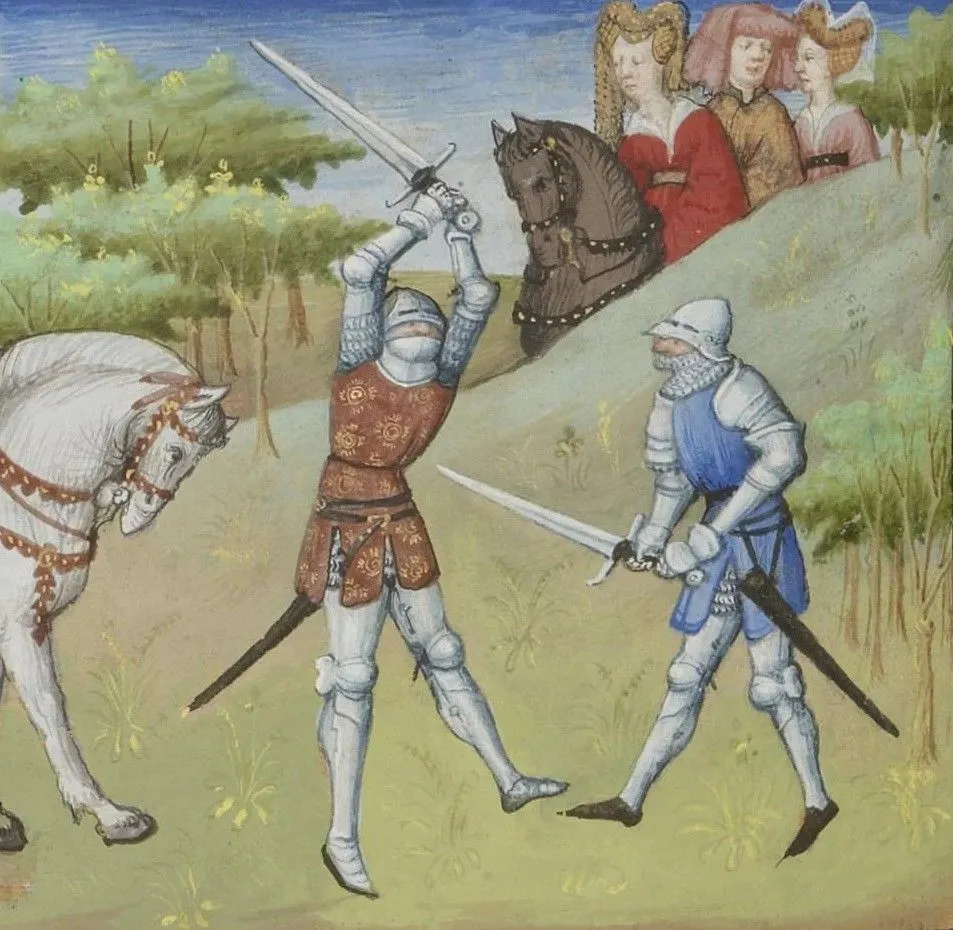 @roffels7/reddit.com
@roffels7/reddit.com
Sometimes, the bride herself could join in, wielding a dagger to defend her new husband's honor. These dramatic confrontations were as much about entertainment as they were about resolving conflicts, transforming weddings into a blend of romance and action. While it might sound wild, it ensured that grievances were addressed and resolved swiftly, though with a bit more swordplay than what we’d see at weddings today.
23. Dual Sleep Sessions
Before the era of artificial lighting, people followed a unique sleep pattern known as “biphasic sleep.” Instead of getting a continuous eight hours, medieval individuals would sleep in two segments. They would first sleep for a few hours, then wake up around midnight for a period of quiet activities—reading, praying, or even visiting neighbors. This interim was known as the “watch.”
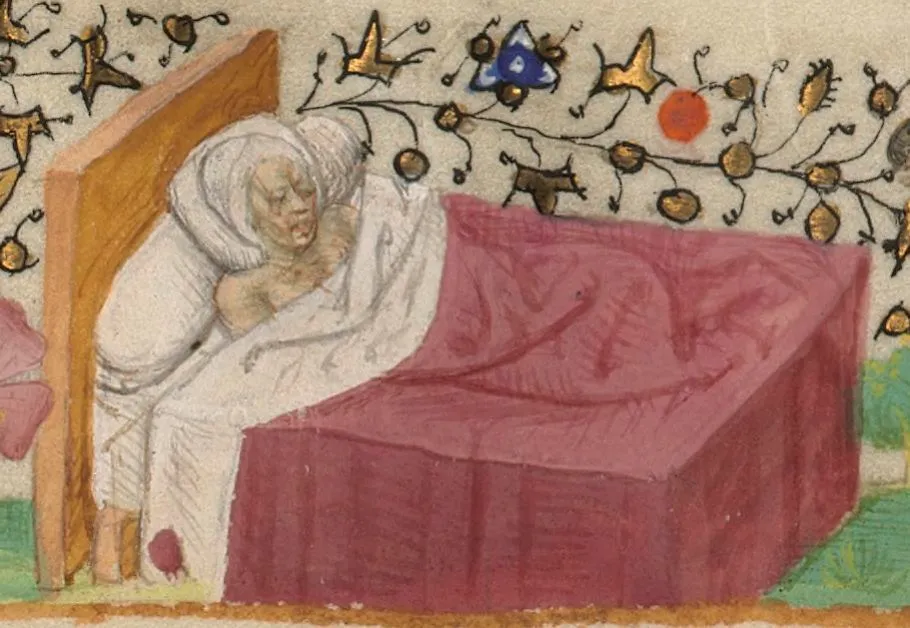 @Rodlofo/hetoogdesmeesters.com
@Rodlofo/hetoogdesmeesters.com
Afterward, they’d return to bed for a second sleep until dawn. This pattern was a practical response to the natural cycles of light and darkness. Imagine waking up in the middle of the night and not reaching for your phone but rather engaging in peaceful reflection or sharing secrets in the dark. This sleep pattern was so common it was referenced in literature, medical texts, and personal correspondence of the time.
24. Throwing Faeces Out the Window
The cities weren’t exactly renowned for their sanitation. Picture walking down a quaint cobblestone street, only to be met with the unmistakable stench of human waste. That’s because medieval waste disposal often involved tossing it out the window. A loud cry of “Gardez l’eau!” (which means “Watch out for the water!”) was meant to alert passersby to dodge the incoming stream of waste.
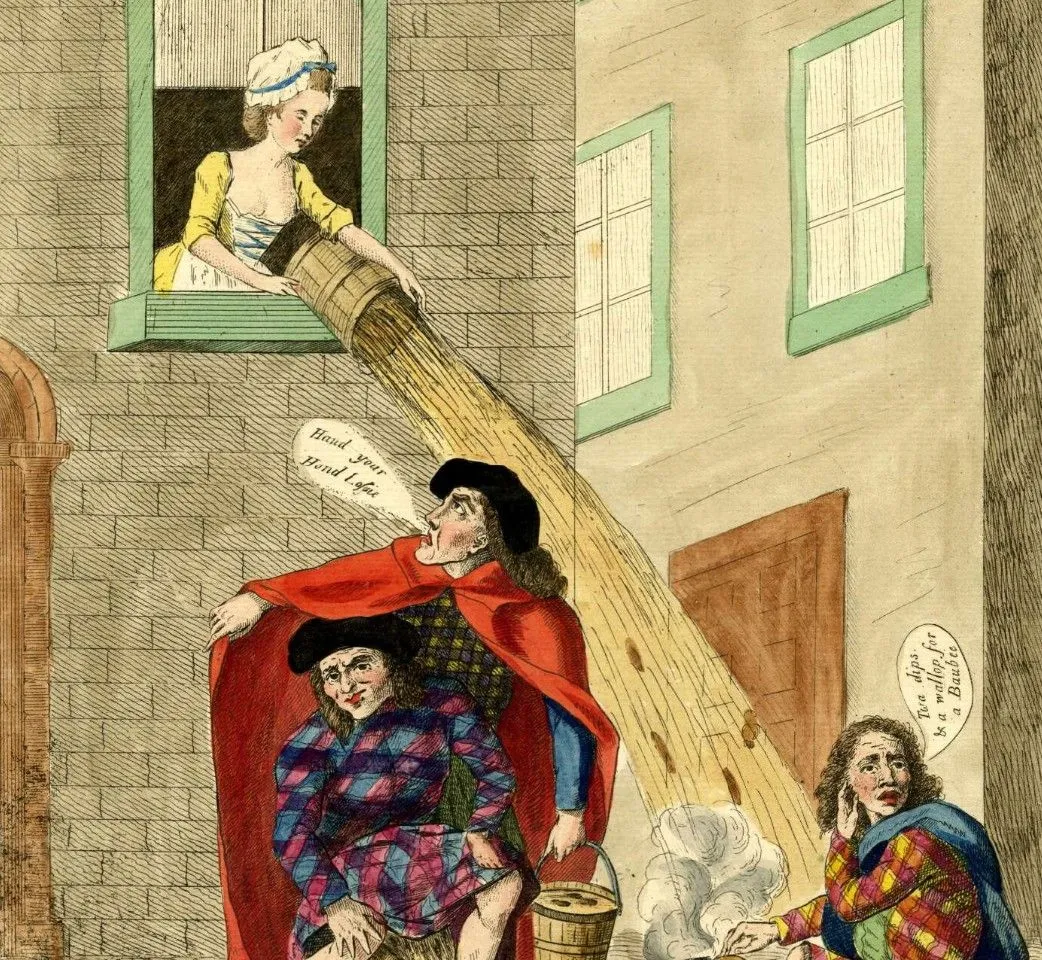 @Effiedeans/x.com
@Effiedeans/x.com
The already crowded and bustling streets frequently turned into rivers of muck. It wasn’t just unpleasant—it also created a breeding ground for disease. You’d need to stay vigilant, not just for pickpockets but also for airborne surprises. The absence of proper sewage systems meant waste management was quite literally a toss-up. Be thankful you’re not having to avoid flying chamber pots. This medieval practice is a stark reminder of how much progress we’ve made in urban hygiene.
25. The Popularity of Lances
Showcasing bravery and skill wasn’t about flashy vehicles but about wielding a lance. Lances were the superstars of medieval weaponry, especially favored by knights. These long, robust poles were central to jousting tournaments—the medieval equivalent of extreme sports. Mastering the lance was the ultimate test of precision and strength.
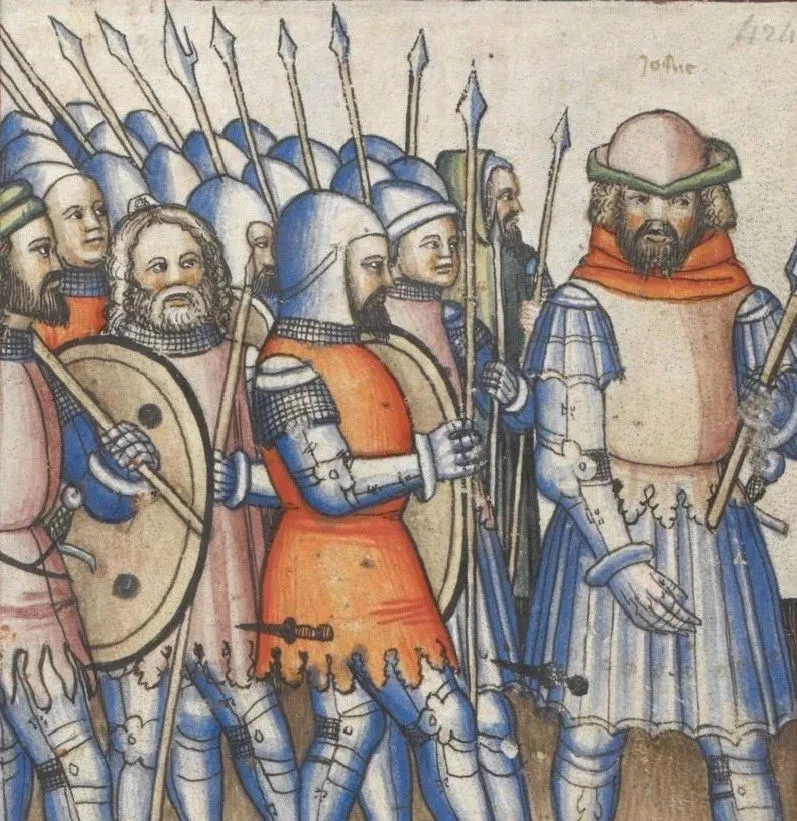 @RVCH86/reddit.com
@RVCH86/reddit.com
On the battlefield, lances were crucial, allowing knights to strike from a distance and making them formidable opponents. They also symbolized chivalry and nobility, often decorated with family crests or intricate designs. Young squires eagerly anticipated the moment they could wield a lance in battle or competition, marking their transition to knighthood.
26. Protection Against the Plague
The plague doctors were quite the sight, wearing beaked masks that made them resemble ominous birds rather than medical practitioners. These masks were stuffed with aromatic herbs, believed to protect them from the “miasma” — the foul air thought to spread the plague. Their gear was more than just a peculiar outfit; it was a desperate measure to survive a devastating epidemic.
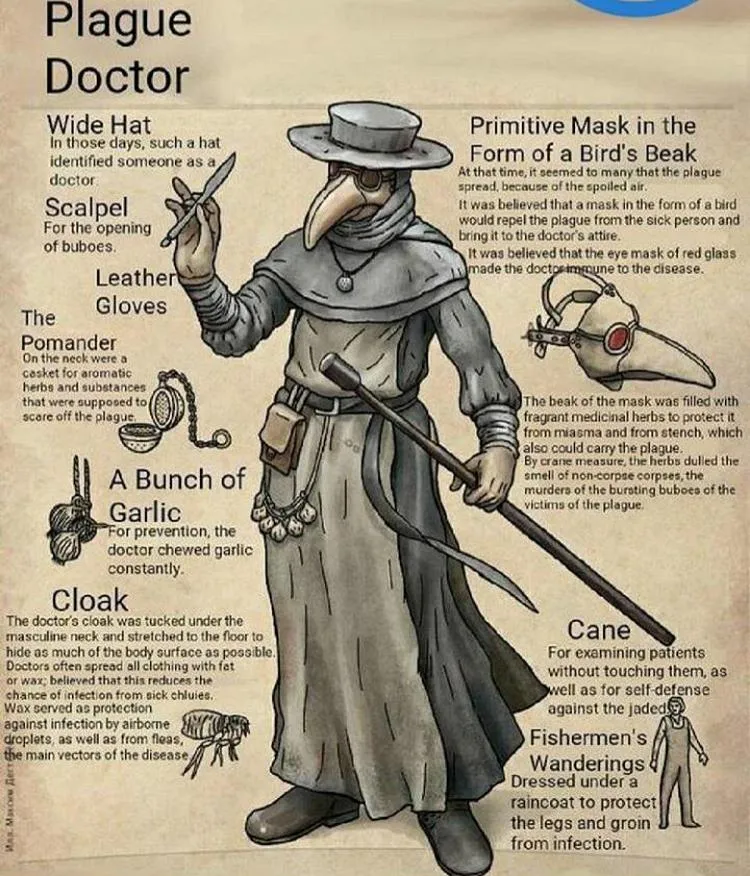 @Shadow__987/reddit.com
@Shadow__987/reddit.com
Plague doctors used wooden canes to examine patients without direct contact, and their grim appearance was both a symbol of fear and hope. These doctors were often hired by towns in a frantic attempt to manage outbreaks. Despite their unsettling look, they were among the few brave enough to confront the deadly disease. Today, those beaked masks serve as a poignant reminder of a time when medicine was a blend of superstition and courage.
27. Courts of Chivalry
The chivalric courts were the arena where knights honed their honor and resolved disputes. These courts weren’t focused on legal minutiae but on upholding the code of chivalry. Disputes often revolved around breaches of honor, such as accusations of cowardice or improper conduct. A knight might be challenged to a duel to prove his integrity, with the proceedings serving as much as a spectacle as a quest for justice.
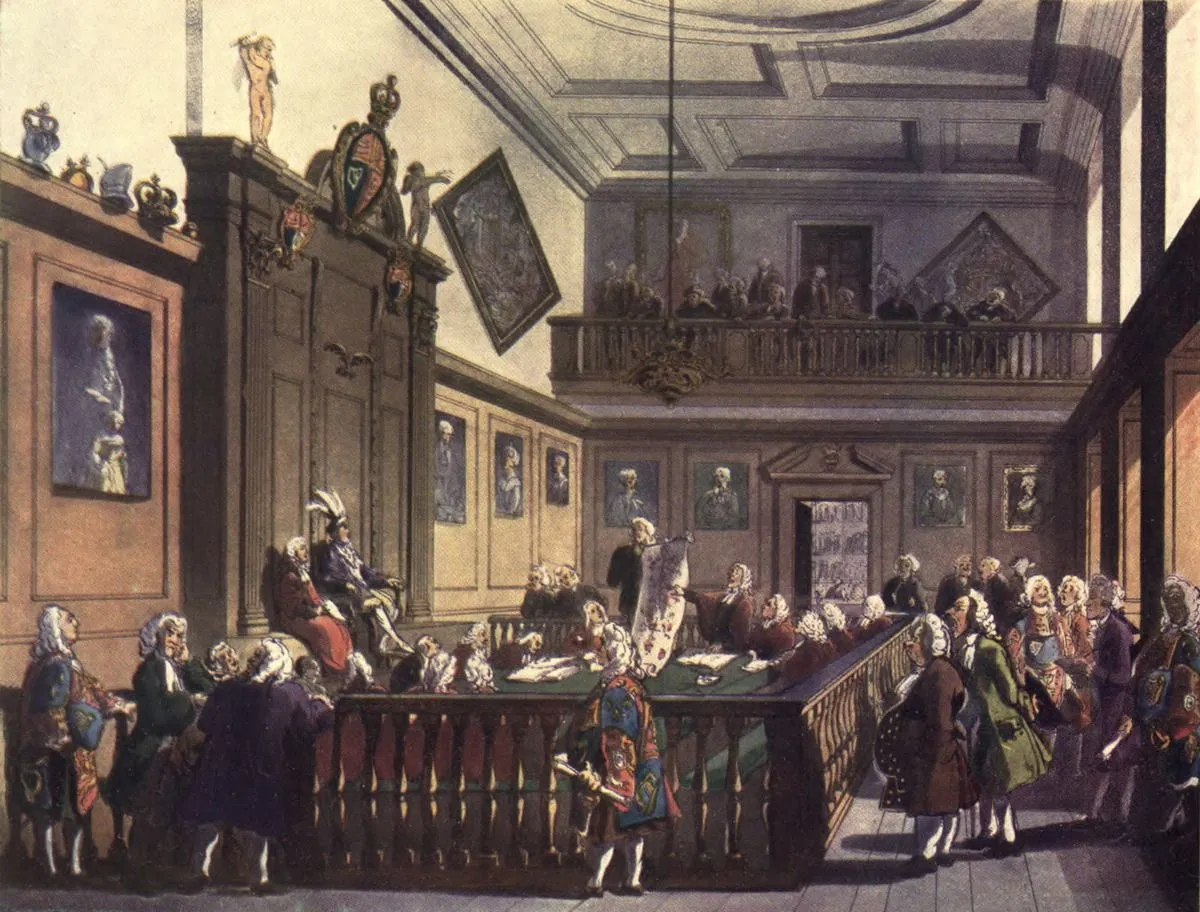 @High Court of Chivalry/wikipedia.org
@High Court of Chivalry/wikipedia.org
Chivalric courts also addressed matters of courtly love, where knights debated the virtues and actions of their beloved ladies. In these courts, valor, loyalty, and gallantry were put on trial, and decisions were based not only on evidence but on the display of knightly virtues. They reinforced the ideals of chivalry, ensuring knights adhered to their lofty codes.
28. Shouting Pursuits of Thieves
In medieval times, catching a thief wasn’t about surveillance or sirens — it was all about the “hue and cry.” When a theft occurred, the victim would raise a ruckus by shouting and calling on the community to help. This collective effort turned into what resembled a medieval flash mob, with the whole village joining in the chase.
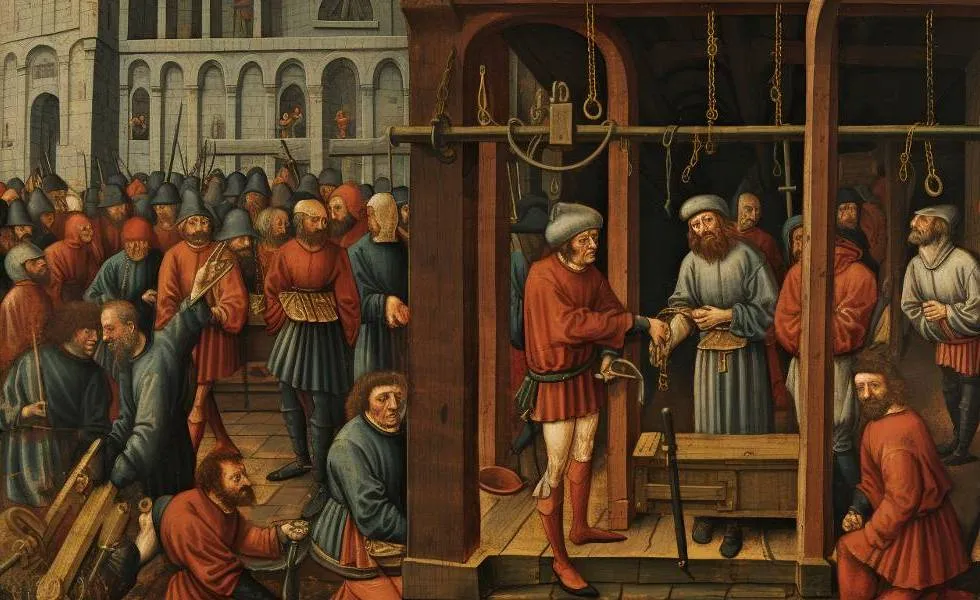 @Medieval Crime & Punishment: Dark Tales/knightstemplar.co
@Medieval Crime & Punishment: Dark Tales/knightstemplar.co
If the thief was apprehended, justice was usually swift and severe, with punishments ranging from public shaming to harsh physical penalties. This system depended heavily on the community’s readiness to act, fostering a strong sense of shared responsibility. It underscores the medieval focus on communal justice and the vital role of collective action in maintaining order.
29. The Trade of Daughters
The practice of selling daughters into marriage was a stark reflection of economic priorities rather than romantic ideals. Families negotiated dowries — payments made to ensure their daughters secured advantageous marriages — as a means of survival and forging alliances. Daughters were viewed as assets, and these marriage arrangements could enhance a family’s status or stabilize their economic situation.
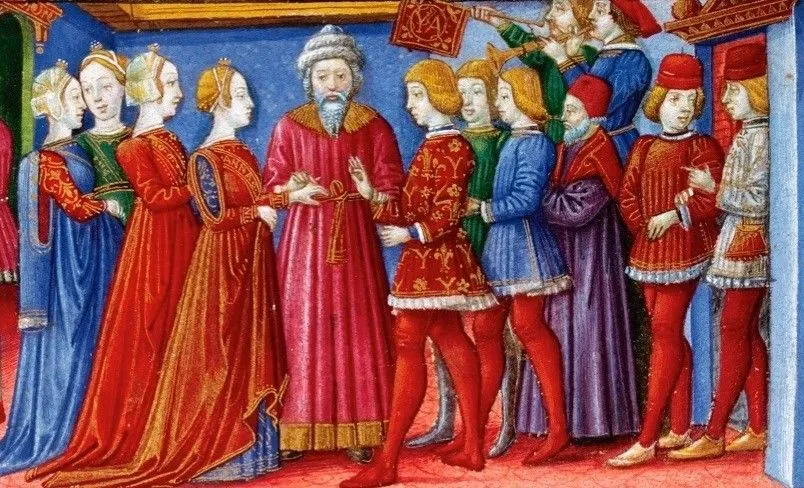 @Love and marriage in medieval England/historyextra.com
@Love and marriage in medieval England/historyextra.com
Young girls were often married to much older men, making marriage a strategic business arrangement rather than a matter of love. While this may seem unsettling today, it was a practical necessity in an era where social mobility was limited. This practice highlights how medieval society often prioritized economic and social strategy over personal choice, leaving the tales of romantic love to the poets and minstrels.
30. Women's Illiteracy
During the medieval period, education was predominantly a male privilege, resulting in widespread illiteracy among women. Literacy for women was uncommon and often viewed as unnecessary or even risky. Noblewomen might have had private tutors but peasant women generally learned only domestic skills. Educated women, mostly nuns, were exceptions and typically lived in seclusion within convents. This disparity went beyond mere reading and writing; it was about power and control.
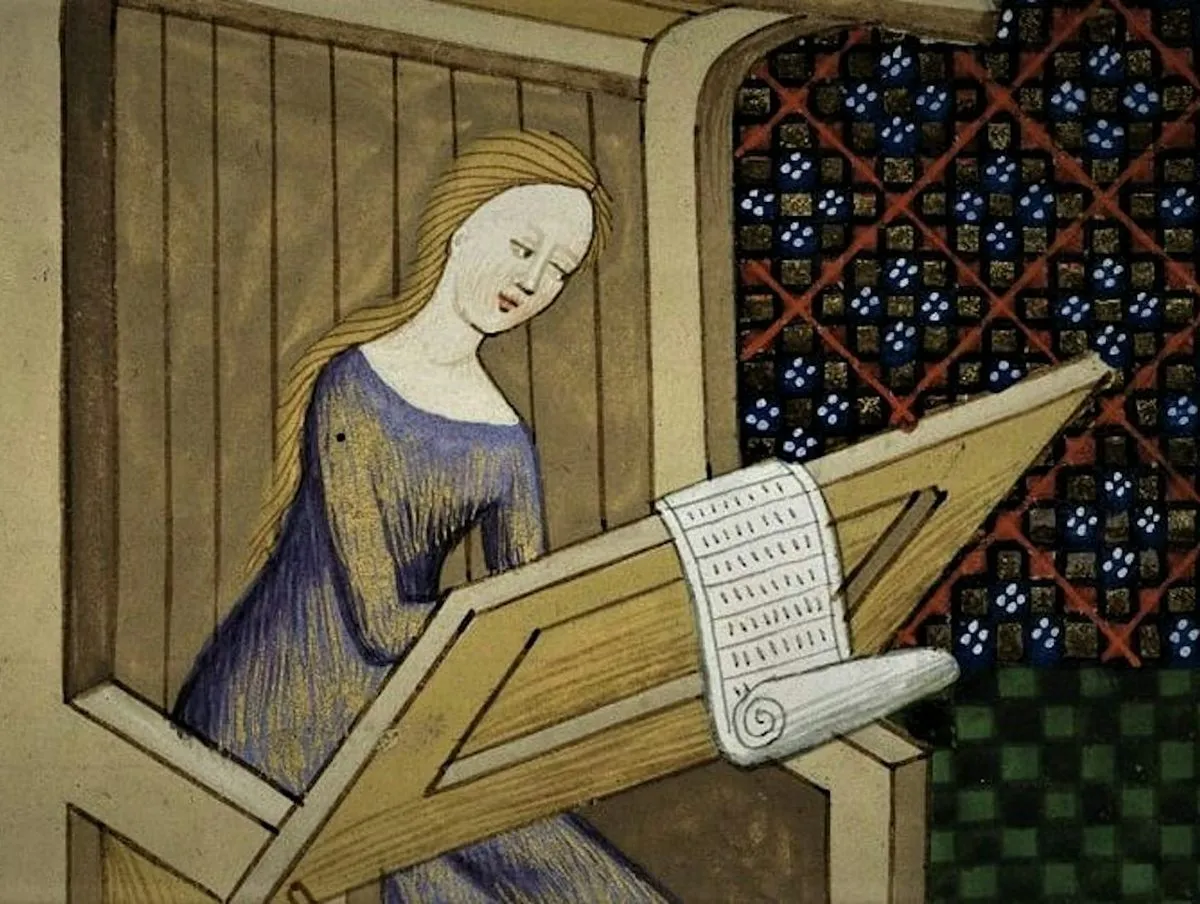 @Sidjoneya/reddit.com
@Sidjoneya/reddit.com
Keeping women uneducated ensured their subordination, limiting them to household roles rather than societal influence. These gendered restrictions on education reflect a broader social structure designed to confine women to narrowly defined roles. Despite significant progress toward gender equality in education today, the historical context of medieval female illiteracy underscores the ongoing struggle for women's access to knowledge and autonomy.
31. Cats that were Burned
Medieval Europe harbored some peculiar superstitions, one of the strangest being the fear of cats. Viewed as companions of witches, especially black ones, cats were often rounded up and burned. Picture a village square where people gathered around a bonfire not of wood but of innocent felines. This bizarre practice was believed to ward off evil spirits and witchcraft. Ironically, in their attempt to combat what they feared most, they may have worsened the very problem they sought to avoid—disease.
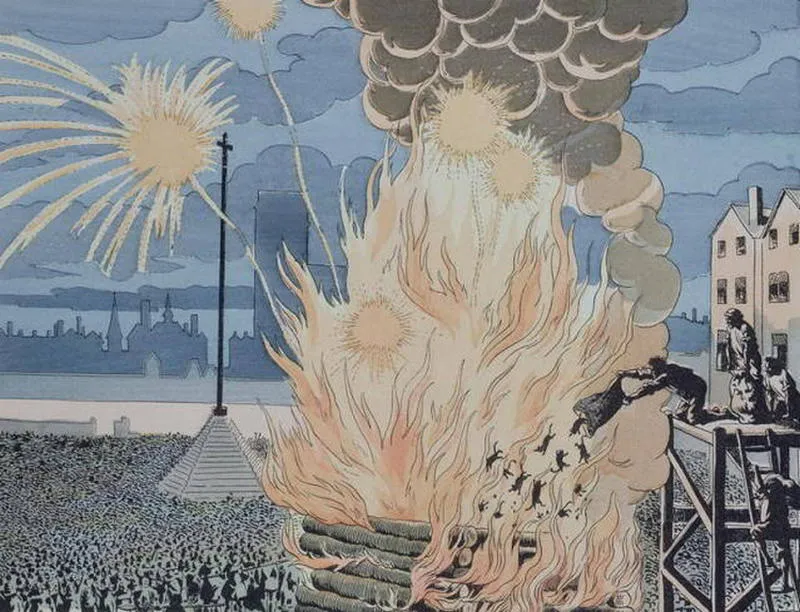 @peashooter85/tumblr.com
@peashooter85/tumblr.com
With fewer cats to control the rat population, plagues like the Black Death had more opportunities to spread. These cat-burning rituals were part of a larger pattern of medieval superstition and fear, where anything even remotely associated with the supernatural was met with extreme actions. This serves as a stark reminder of how ignorance and fear can lead to irrational and cruel behavior.
32. Shades and Shouts
The justice often depended on the collective action of the community, exemplified by the “shades and shouts.” When a crime occurred, the victim or a witness would raise an alarm, prompting everyone nearby to pursue the offender. This was not merely a request for assistance; it was a legal obligation. Failing to join in the hue and cry could result in a fine. It represented an early form of crowd-sourced justice, relying on active community participation.
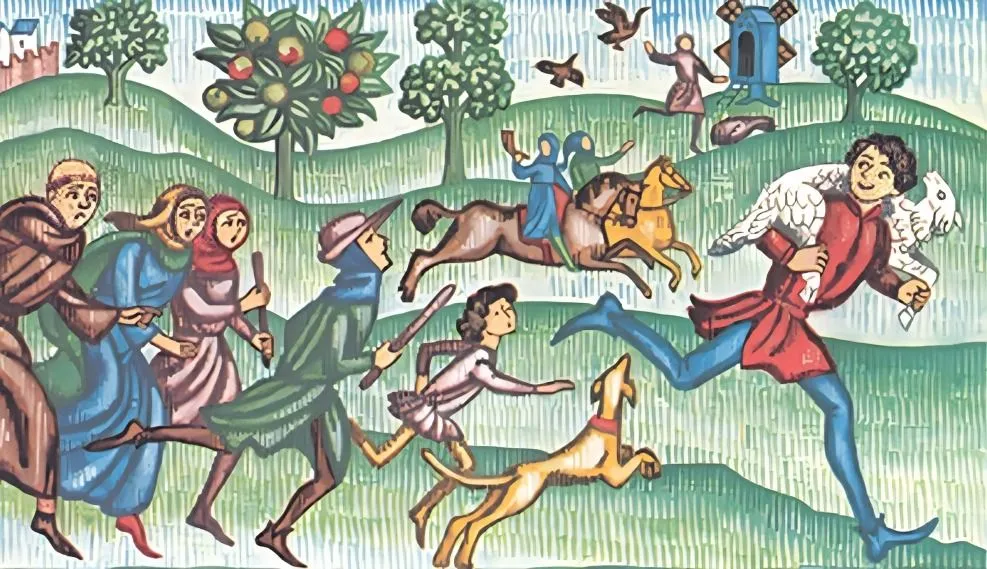 @epolicemuseum/x.com
@epolicemuseum/x.com
This system promoted a sense of communal responsibility and vigilance, making it more difficult for criminals to evade capture. This practice highlights the close-knit nature of medieval communities, where everyone’s involvement was essential for maintaining order. Although it may seem quaint today, the hue and cry was an effective method for mobilizing an immediate response to crime, reinforcing the idea that justice was a collective responsibility.
33. Barbers Acting as Surgeons
The barbers were more than just your local hairdresser—they also served as community surgeons. Need a haircut and a tooth extraction? They had you covered! The barbers doubled as medical practitioners, offering services such as bloodletting, dental work, and basic surgical procedures. The iconic red and white striped poles, still in use today, originally symbolized bloody bandages and clean clothes. Barbers didn’t receive formal surgical training; their skills were developed through practical experience gained during apprenticeships.
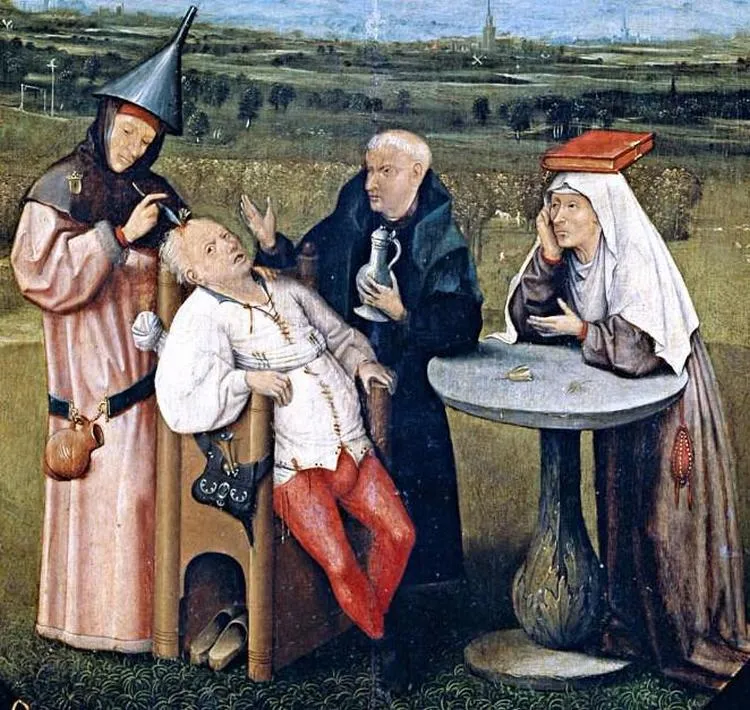 @numquamsolus/reddit.com
@numquamsolus/reddit.com
This combination of barbering and surgery arose from the need for accessible medical care, particularly for those who couldn't afford a physician. Despite their basic techniques, barbers played a crucial role in providing medical services. Their dual role underscores the ingenuity and adaptability of medieval society, where professionals often took on multiple roles or, in this case, wielded multiple tools.
34. Hours of Work
The concept of a nine-to-five job didn’t exist; work hours were determined by daylight and the seasons. Picture a world where your timekeeper was the sun and your calendar was the harvest. People worked from sunrise to sunset, taking breaks only for meals and prayers. Farmers worked tirelessly during planting and harvesting seasons, while craftsmen and traders adapted their schedules to market needs.
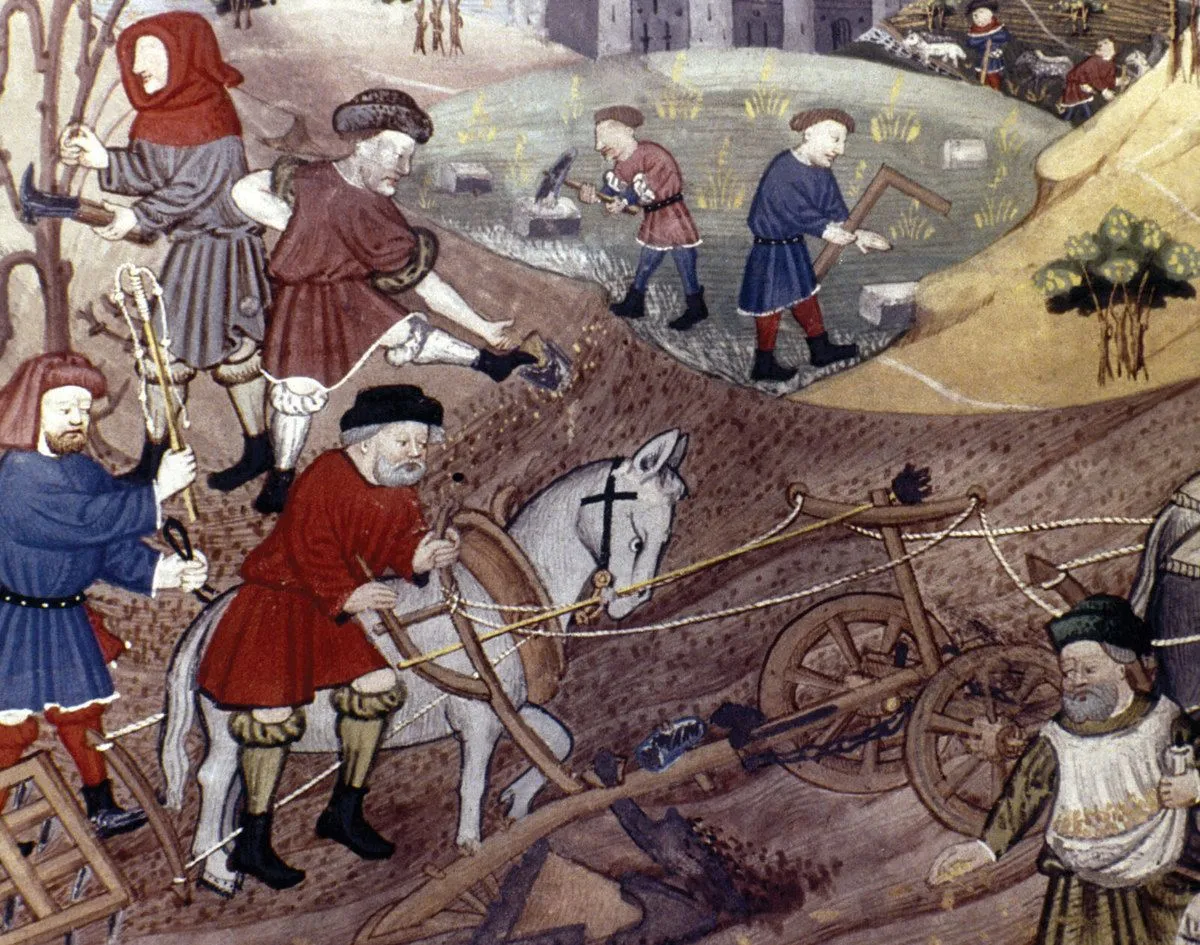 @GanjaG/reddit.com
@GanjaG/reddit.com
Weekends and official holidays as we know them were absent; instead, religious festivals and local customs provided occasional pauses. Life was a continuous cycle of labor, closely tied to the natural rhythms. This way of life emphasized the community’s reliance on each other and their environment. Though the absence of modern labor laws led to demanding conditions for many, it fostered a strong sense of communal identity and shared responsibility.
35. Fasting Practices in the Medieval Period
Fasting was more than just a spiritual practice; it was a way of life. Imagine skipping breakfast and lunch, and adding meat and dairy to the list of forbidden foods. Medieval fasting was a strict practice, with rules ranging from complete abstinence to partial restrictions depending on the day and religious observance. Meatless Fridays and Lent focused meals on fish, grains, and vegetables, leading to inventive dishes like fish pies and lentil stews.
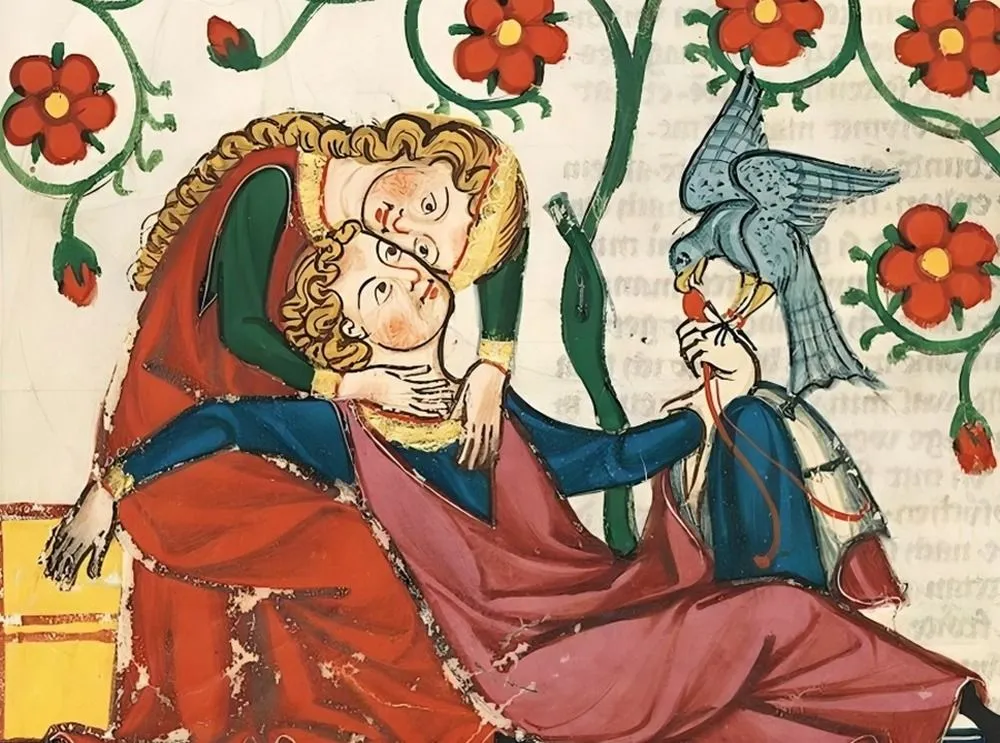 @donotbeafraid1/reddit.com
@donotbeafraid1/reddit.com
For monks and nuns, fasting was a daily routine that emphasized spiritual purity and self-discipline. Even the wealthy engaged in fasting, balancing their indulgences with periods of restraint. While fasting served a spiritual purpose, it also had practical benefits, helping to conserve food during scarce times and encouraging healthier eating habits. Compared to today’s intermittent fasting trends, medieval fasting reflects a more intense commitment to self-denial.
36. Second Cousins
The marriage often involved a tangled web of family connections, where the line between kinship and courtship was sometimes blurred. Imagine falling in love only to discover your partner is a distant cousin. Marriages between second cousins were quite common in medieval Europe, particularly among noble families who sought to consolidate wealth and power. Though marriages between close relatives were controversial, they served strategic purposes, such as forging alliances and maintaining inheritance within the family.
 @Tracypop/reddit.com
@Tracypop/reddit.com
These unions were not solely about romantic love but were crucial for survival and succession. The Church occasionally disapproved, citing concerns about genetic defects and moral issues but dynastic interests usually took precedence. For commoners, marrying within extended families was less frequent but still occurred, reflecting the close-knit nature of medieval communities. Today’s taboos regarding cousin marriages contrast sharply with the norms of the medieval period.
37. Iron-clad Child Protection
The infant mortality was high, and superstitions were deeply ingrained. To safeguard babies from evil spirits and illness, parents often placed iron objects near cribs. Picture a crib encircled by horseshoes, nails, or even scissors — items believed to repel malevolent forces. This practice was rooted in the belief that iron possessed mystical properties capable of warding off supernatural threats. Parents, striving to ensure their child’s survival, turned to these folk remedies in hopes of divine protection.
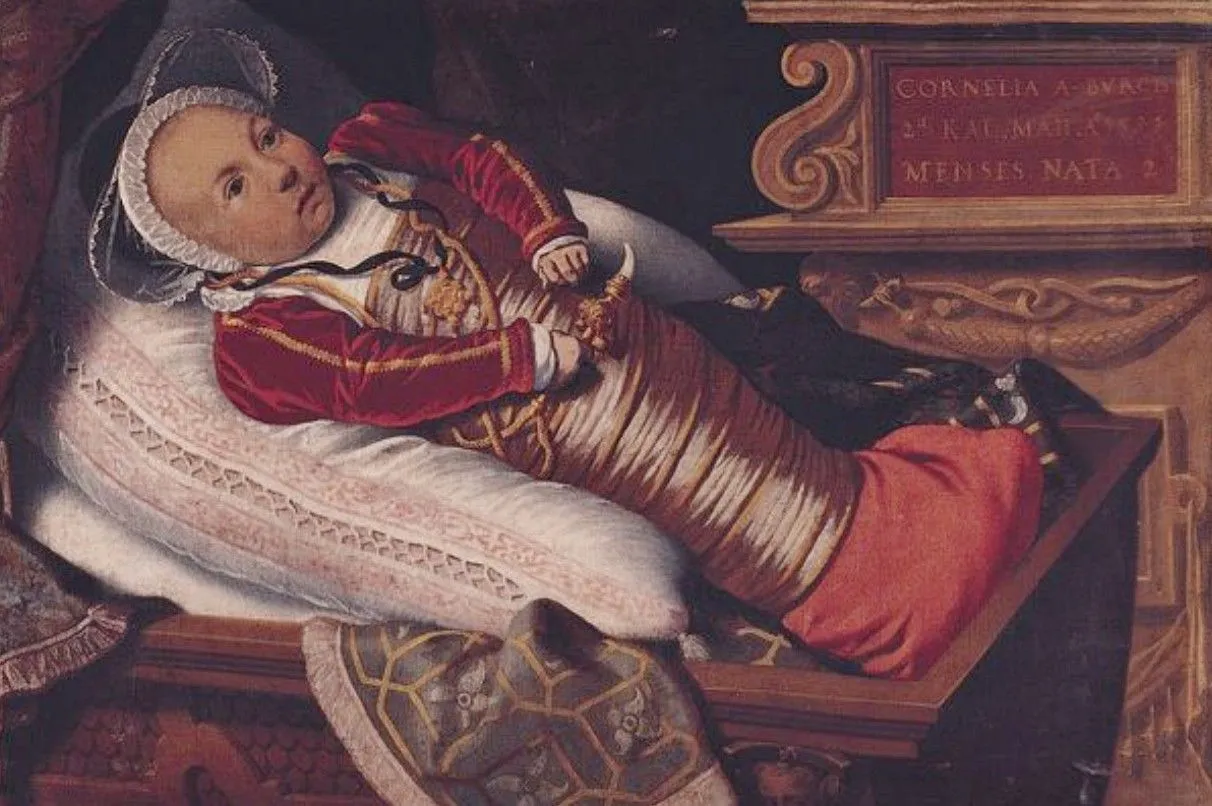 @lissabryan/tumblr.com
@lissabryan/tumblr.com
While lacking a scientific basis, these rituals offered psychological comfort amid the uncertainties and risks of the time. The use of iron for baby protection highlights the precarious nature of medieval childhood and the lengths to which parents would go to protect their children. Although modern medicine has debunked these superstitions, they reflect a time when life was fraught with dangers and uncertainties.
38. Several Wives
Polygamy wasn’t merely a distant concept; it was a reality for some. Among the nobility and wealthier classes, having multiple wives served as a symbol of status and power. Picture the challenges of managing multiple households and maintaining harmony among competing spouses. Although Christianity disapproved of polygamy, it continued in various forms across medieval Europe, often justified by political alliances or the need for heirs.
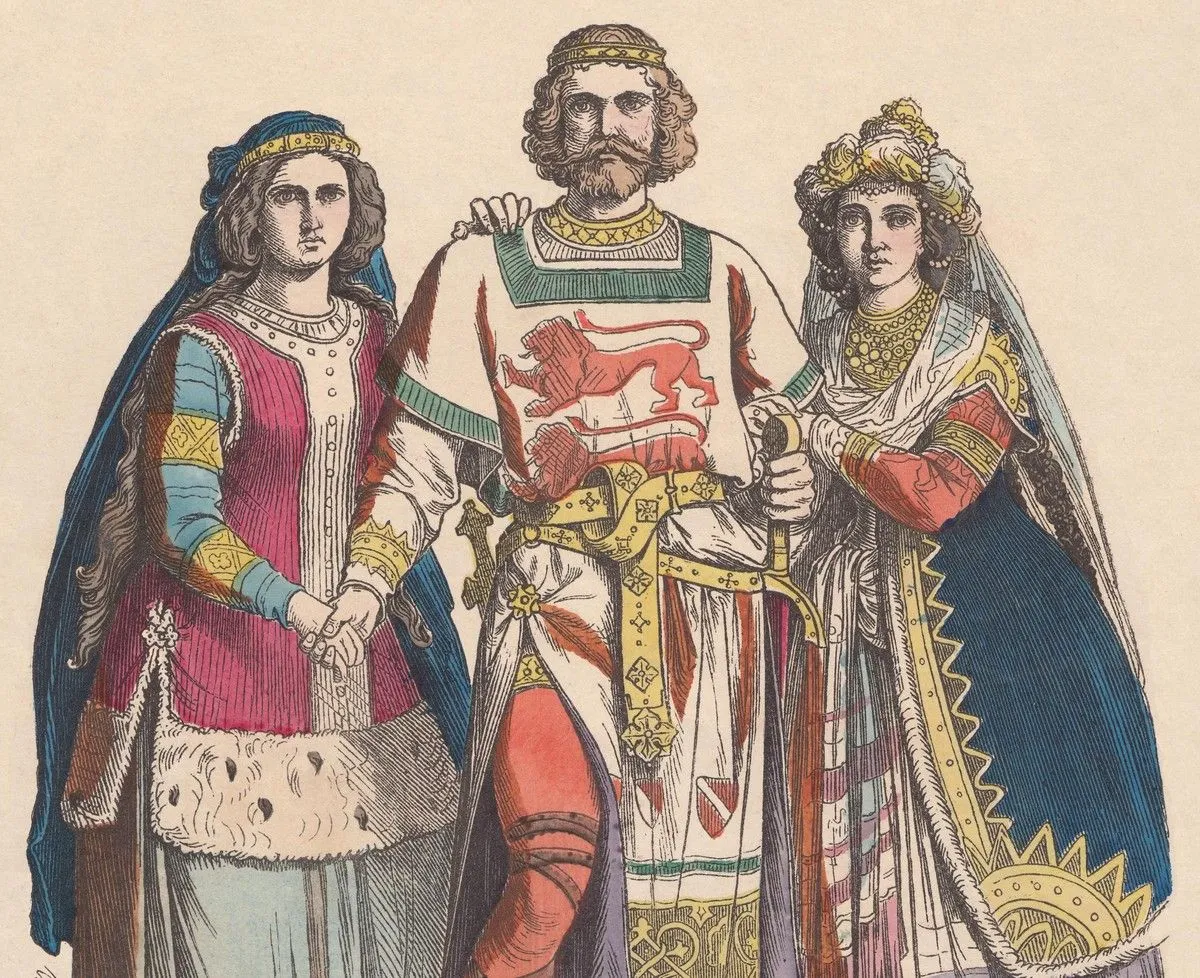 @lucia-osullivan/independent.co.uk
@lucia-osullivan/independent.co.uk
For commoners, polygamy was rarer due to economic constraints but concubinage offered an alternative. Despite the potential for jealousy and discord, polygamy provided social advantages and strategic benefits. The medieval world was a complex web of relationships where marriage extended beyond love to encompass politics, property, and power dynamics.
39. Toothpicks
Dental hygiene in the Middle Ages was quite resourceful and eco-friendly, though it lacked the minty freshness we’re used to today. Enter toothsticks—small twigs or branches used as early toothbrushes. Imagine using a twig to clean your teeth, a practice rooted in ancient traditions and natural remedies. These sticks were often from trees with medicinal properties, believed to clean teeth and freshen breath. Various cultures used different types, such as olive, oak, neem, and miswak, each thought to offer unique benefits.
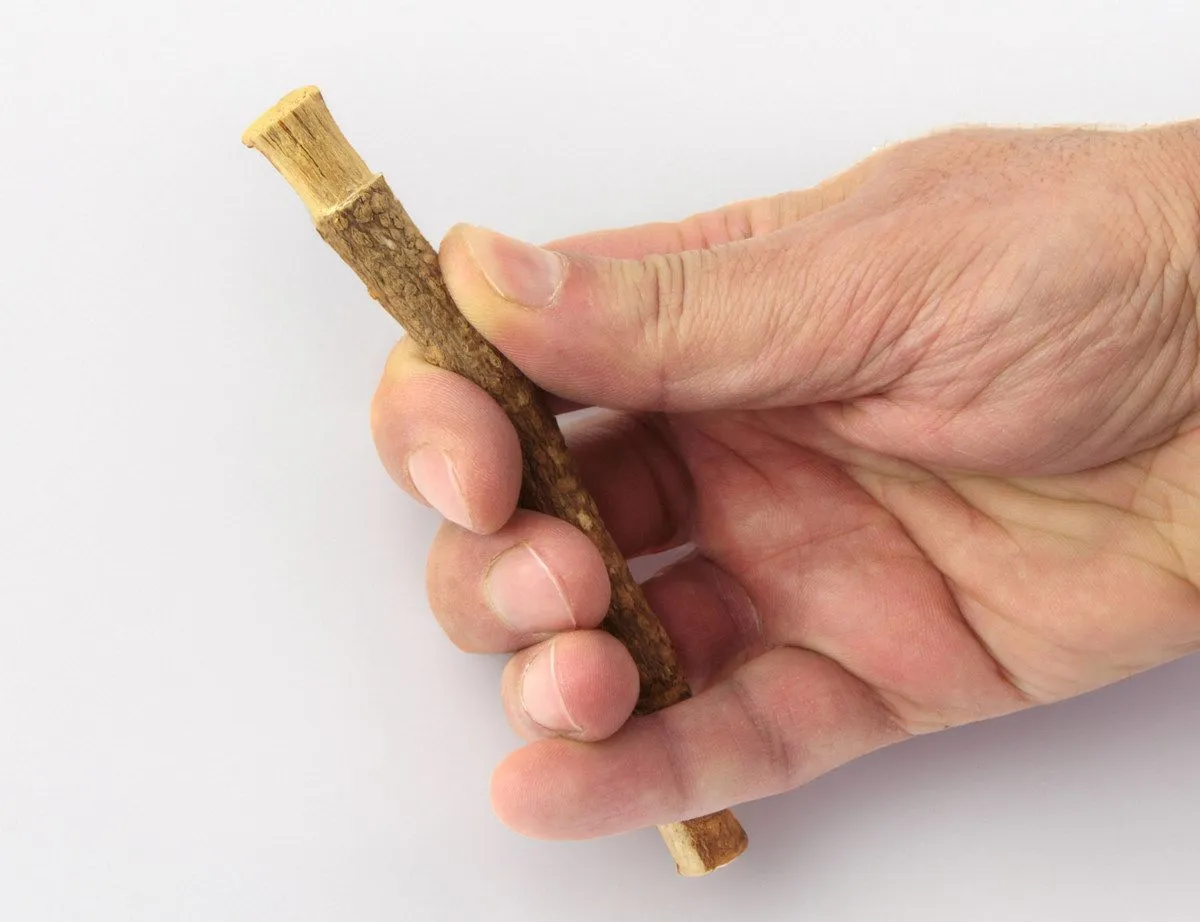 @The history of the toothbrush and tooth brushing/curaprox.us
@The history of the toothbrush and tooth brushing/curaprox.us
While medieval Europeans used twigs from fragrant trees like pine and juniper, Middle Eastern cultures preferred branches with antibacterial properties. Toothsticks represented a sustainable approach to dental care, providing a basic but effective method for maintaining oral health long before the advent of modern toothpaste and dental floss.
40. Community Beds
Privacy was a rare luxury, particularly regarding sleeping arrangements. Imagine sharing a bed with strangers at an inn or hostel, where personal space was minimal and beds were communal. Public beds were common in medieval Europe, serving travelers, pilgrims, and locals. These large sleeping areas accommodated multiple guests, often divided only by curtains or partitions. Despite the lack of privacy, public beds offered warmth, security, and a sense of camaraderie during long journeys or crowded festivals.
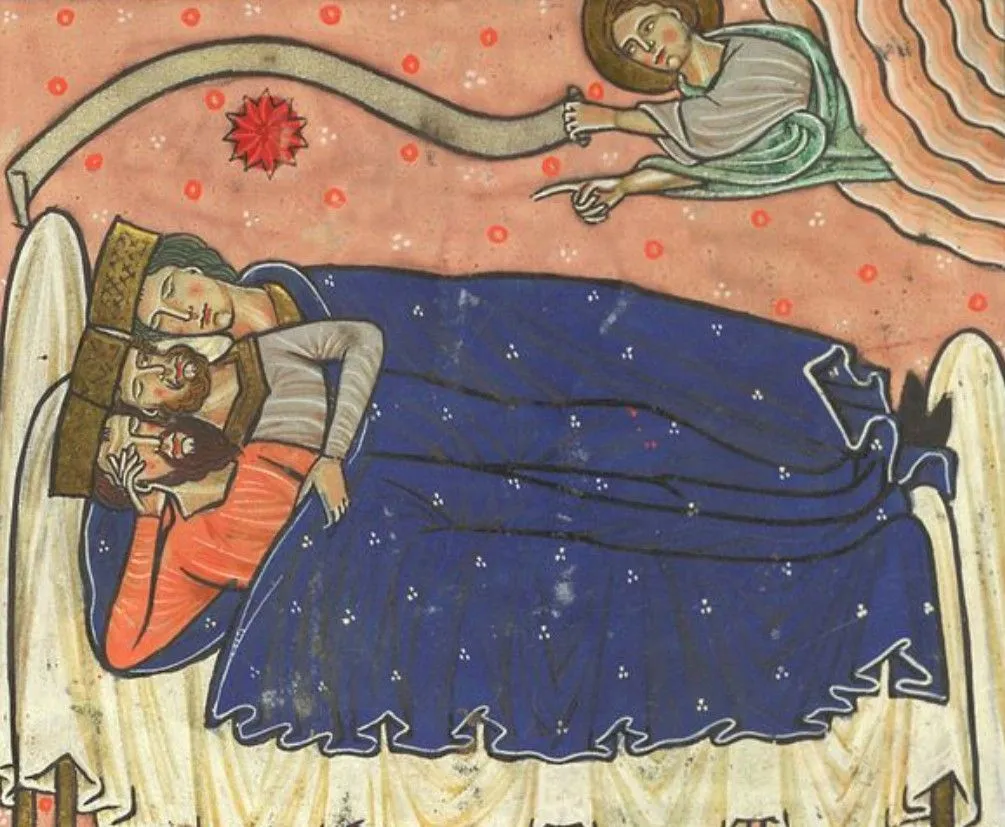 @isabel-carrasco/culturacolectiva.com
@isabel-carrasco/culturacolectiva.com
They exemplified medieval hospitality and the practical aspects of communal living, where strangers not only exchanged stories but also shared sleeping quarters under the same roof. Today, our understanding of personal space and privacy has changed but public beds offer a fascinating glimpse into medieval social customs and daily life.